TOP DESTINATIONS
- Kruger Park
- Okavango Delta
- Serengeti National Park
- Victoria Falls

TOP COUNTRIES
- South Africa
TRAVEL DEALS
View All Travel Deals
SOUTHERN AFRICA
East africa, indian ocean islands, top experiences.
- Beach Holidays
- Family Safaris
- Honeymoon Safaris
- Desert Safaris
- Luxury Rail Safaris
- Multi-Generational Safaris
- Positive Impact Safaris
- Photographic Safaris
- Walking Safaris
WILDLIFE SAFARI
- Big Five Safaris
- Birding Safaris
- Gorilla Trekking Safaris
- Migration Safaris
- Mobile Camping Safaris
- Horseback Safaris
FEATURED EXPERIENCES
Comfort levels, property types.
- Tented Camps
- Boutique Hotels
Featured Safari Collections
- African Anthology
- Imvelo Safaris
- Saruni Basecamp
- Elewana Collection
GET TO KNOW US
- Meet The Team
- Pricing Explained
- Traveller Reviews
- Traveller Stories
- Why Book With Us?
- HerdTracker
- Safari Cost Calculator
- South Africa In 360
- Trusted Safari Partners
What are you looking for?
- Safaris & Tours
- Destinations
- Experiences
- Accommodations
- Why book with us?
Hello traveller!
It's in Cape Town now.
We're sorry. Our safari planners aren't available now. Our office hours are 08:00 - 19:00 (GMT+2).
Call us to speak to an experienced safari planner.
Alternatively, we recommend...
Schedule a phone or Zoom call with one of our safari planners
Complete our travel enquiry form to connect with a safari planner
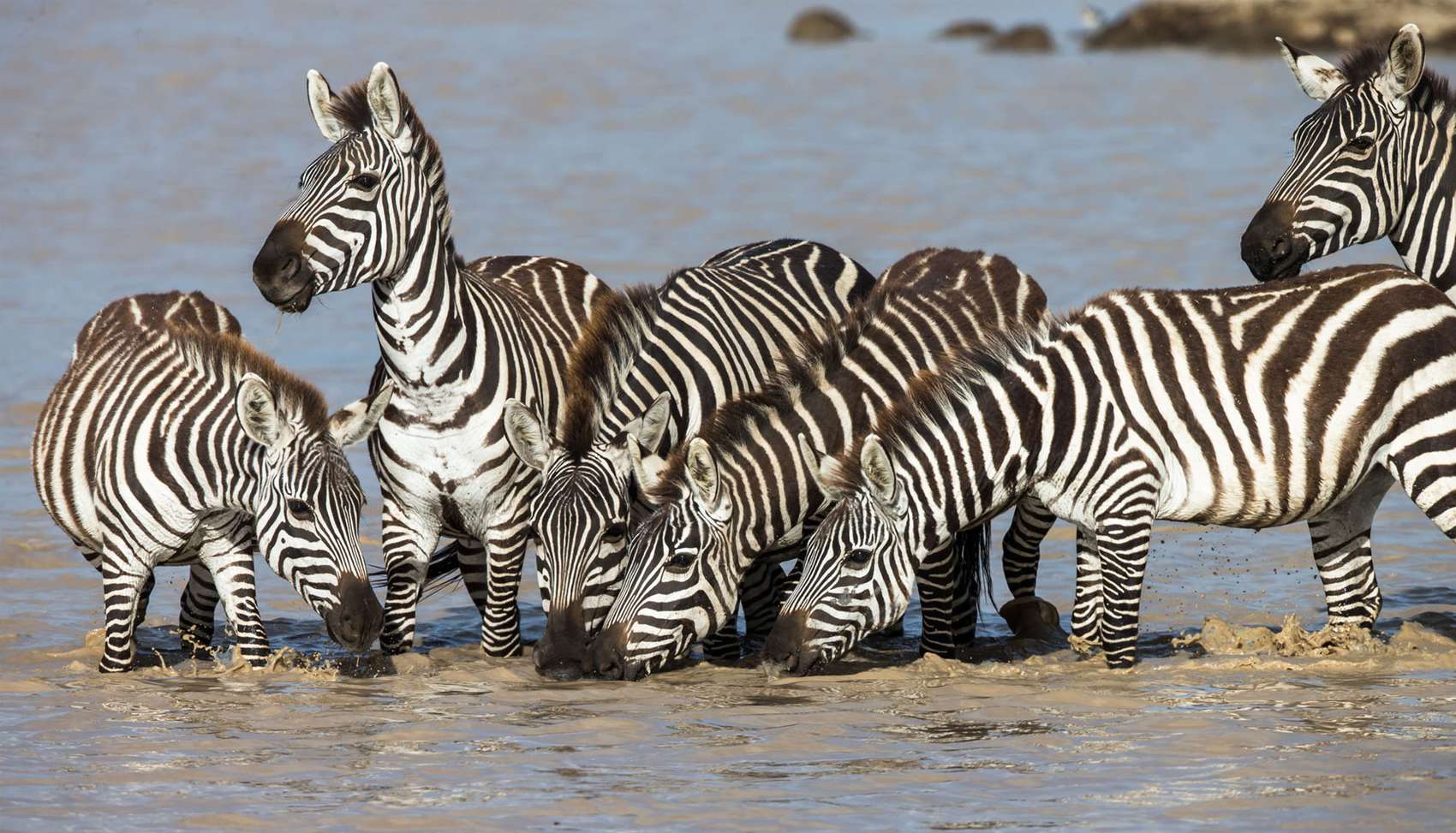
- Southern Safari Circuit in Tanzania
Africa's best authentic tailor-made safaris

By Diane Du Plessis
Safari Travel Planner
The southern safari circuit sprawls across southern Tanzania. From the gigantic Selous Game Reserve in the east to Mahale Mountains and Gombe Stream national parks on the shore of Lake Tanganyika in the west, this is wildest Africa and the domain of adventurers and explorers. Between Africa’s deepest lake and the Selous World Heritage Site lie the diminutive Mikumi and Udzungwa Mountains national parks, as well as the impressive Ruaha-Rungwa ecosystem and the beguiling Katavi-Rukwa landscape. For those intrepid travellers who opt for the road less travelled, the alluring southern safari circuit beckons with the promise of genuine wilderness and real adventure.
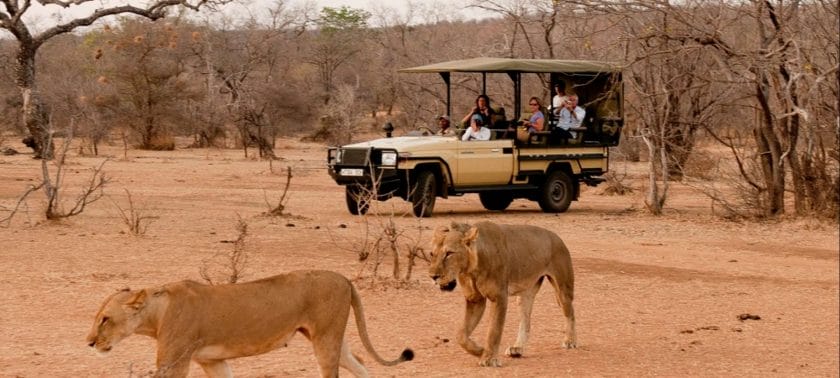
Bisected by the crocodile-infested Rufiji River and home to the world-renowned Stiegler’s Gorge, the 50,000 square kilometre Selous Game Reserve remains an iconic safari destination and long-standing safari highlight of southern Tanzania despite its on-going poaching and hydro-development challenges. Although poaching has ravaged the enormous elephant herds of years gone by, the Selous still supports around 16,000 of these grey giants as well as a thriving population of wild dogs.
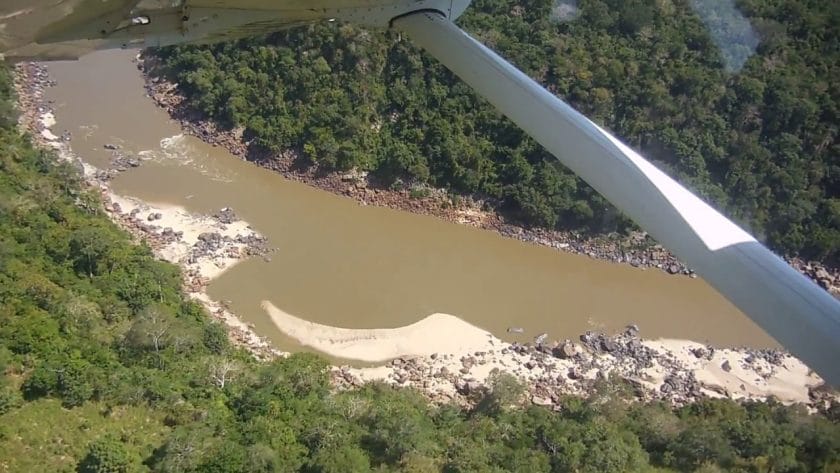
One of the largest national parks in East Africa, the 20,226 square kilometre Ruaha National Park is almost unknown outside of Tanzania, yet with an estimated 10 percent of the surviving wild lion population in Africa, it is definitely a highlight on any trip to explore the wild south of the country. Beautiful landscapes peppered with giant baobabs, elephants, abundant plains game and one of the only places you will see greater kudu in Tanzania are further good reasons to make sure Ruaha is on the itinerary of every intrepid safari connoisseur. It is best explored during the long dry season from June to October when the animals congregate near the perennial Great Ruaha River, which – along with the Mwagusi, Jongomero and Mzombe rivers – provide the lifeblood of the park. The banks of the Ruaha are a permanent hunting ground for lion, leopard, cheetah, hyena and even the endangered African wild dog, which prey on the impala, gazelle and waterbuck that come to drink at the river. Whether exploring this large tract of African wilderness by vehicle or foot, Ruaha is a special place to visit.

Wild and remote Katavi National Park is one of the country’s most unspoiled and untouched bush settings with amazing landscapes and rich wildlife. The 4,471 square kilometre park is difficult to access and consequently can be relatively costly to visit. As a result, few people make the effort to come here. While the Serengeti might see 125,000 visitors in a year, the remote Katavi sees no more than a few hundred brave adventurers by comparison. This is wild Africa at its very best and, provided you have the time and budget, it’s a park that’s absolutely worth exploring. With only a couple of small, rustic safari camps, you often come across more prides of lion than fellow safari aficionados on a game drive in Tanzania’s third largest national park. Surrounded by woodlands, two gigantic sprawling grassy plains – Chada and Katasunga – dominate the park and provide a dramatic setting for watching lion-buffalo interactions. During the dry season, the Katuma and Kapapa rivers are the only permanent water in the area and act as a magnet for thirsty wildlife. Hundreds of hippos congregate in the shrinking waterholes and enormous crocodiles sit out the heat inside mud-holes excavated into the riverbanks.
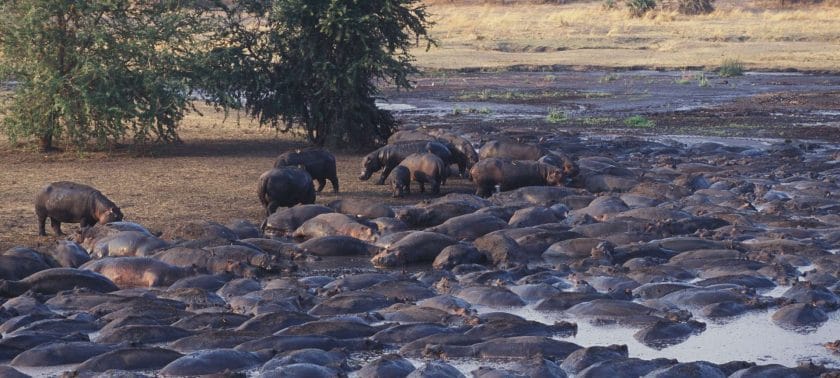
Nestled on the Lake Tanganyika shoreline with its forested mountains rising up from the lakeshore, mesmerising Mahale Mountains National Park boasts stunning scenery and close-encounters with habituated chimpanzees. The mist-covered peak of Mount Nkungwe stands sentinel in the background and the crystal-clear waters of Lake Tanganyika lap against white-sand beaches. Without road access, many safari stalwarts regard Mahale as Tanzania’s most remote park, but also one of its most enthralling. The star attractions are the 1,700 chimpanzees that reside within the 1,613 square kilometre protected area, but the holy grail for most visitors is the 60-strong Mimikere or ‘M’ group, which has been studied by researchers for more than four decades. While the M group of chimps are well habituated, finding our closest relatives can be a challenge. Be prepared for some sweaty, steep climbing through dense vegetation, but the trials and tribulations are well worth the end result.
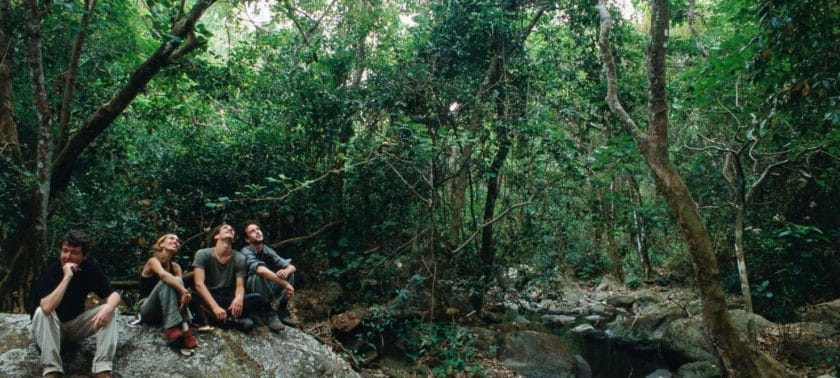
Practical Advice
The southern safari circuit is definitely best attempted during the dry season. Infrastructure is far more limited and basic than you’ll encounter up north. There are also considerably fewer safari camps and accommodation options than the more popular northern circuit, but this is precisely the reason for the southern park’s off-the-beaten-track appeal. It’s also worth noting that there are no roads into Mahale Mountains National Park with visitors having a choice between travelling in by air or by boat.
While most visits to Tanzania’s southern safari circuit are trouble-free, travel advisories are increasingly citing a rise in armed crime. That said, you stand considerably more chance of being injured in a road accident, or getting ill with malaria, or even perishing from a capsized ferry on Lake Tanganyika, so take some sensible safety precautions and you should be fine.
How it Works
View our recommended safaris for inspiration and get ready to plan your dream safari
Contact us or fill out an enquiry form and one of our travel experts will help you tailor make your perfect safari
Enjoy an authentic African experience, with peace of mind
Travel with Confidence
With over 20 years of experience, our team will help you choose the perfect african safari for your adventure., 24/7 support, personalized, popular tanzania safaris, these recommended tours for tanzania can be tailor-made to match your budget..
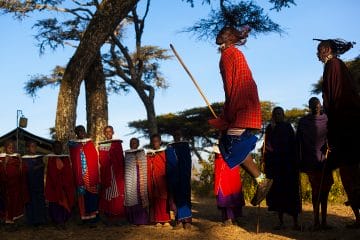
Tanzania Small Group Set Departure Safari
East Africa Tanzania Arusha Lake Manyara Ngorongoro Crater Serengeti
From $ 5440 /USD
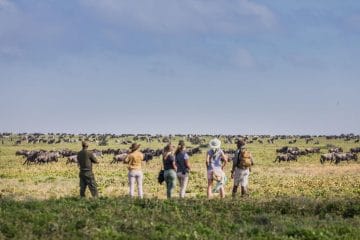
Calving Season Safari with HerdTracker
East Africa Tanzania Arusha Tarangire Lake Manyara Ngorongoro Crater
From $ 15500 /USD
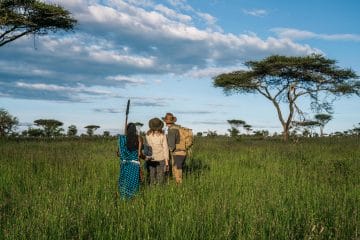
Tanzania Northern Circuit Luxury Safari
East Africa Tanzania Arusha Tarangire Ngorongoro Crater Serengeti
From $ 8900 /USD
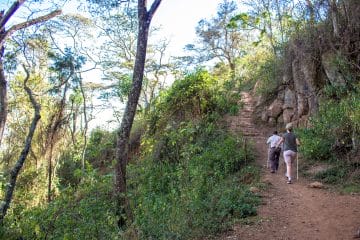
Walking Safari Experiences in Tanzania
East Africa Tanzania Lake Manyara Ngorongoro Crater Serengeti
From $ 7750 /USD
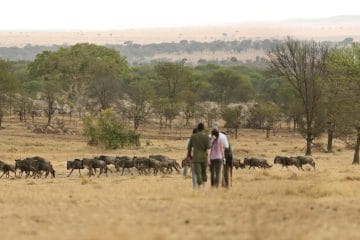
A Romantic Safari in Tanzania
From $ 7580 /USD
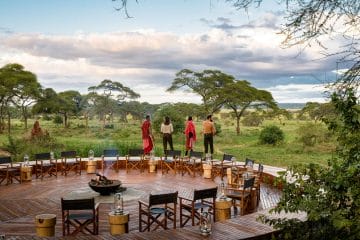
Witness the Great Migration from June to Octobe...
Tanzania Arusha Tarangire Lake Manyara Ngorongoro Crater Serengeti
From $ 10600 /USD
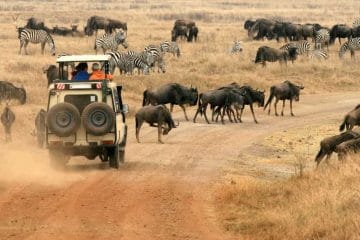
47 Tanzania Safaris to choose from
Stay for 4 - 17 days
Experience our Tailor-made Tours in Tanzania
Our recommended tours in tanzania.
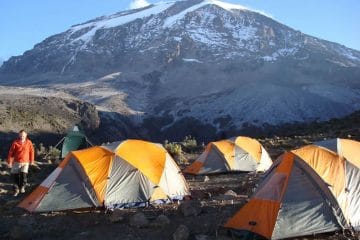
Kilimanjaro Climb with the Machame Route
East Africa Tanzania Arusha Kilimanjaro
From $ 4490 /USD
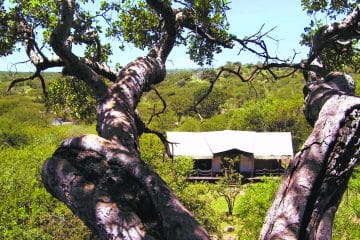
Herdtracker Migration in Central and North Sere...
East Africa Tanzania Serengeti
From $ 8390 /USD
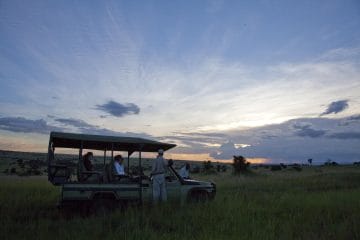
Best of Africa Safari
Botswana Okavango Delta South Africa Johannesburg Kenya Nairobi
From $ 19690 /USD
Why travel with us?
Recent reviews from travellers who planned and booked their africa trips with discover africa safaris, we can do nothing but highly recommend susan from discover africa. what....
10 Days Cape Town, Winelands and Kruger Park Safari Review
Bryan & Neil, United Kingdom 13 Mar 2024
Professional, experienced help throughout the booking journey..
9 Day Tanzania Safari Review
Philippa, United Kingdom 09 Aug 2023
The greatest experience we've had using an agency.
4 Day Luxury Timbavati Safari Review
Colleen Klush, United States 27 Dec 2022
It was above my expectations. i will recommend it to whoever would....
Serengeti Safari & Zanzibar Island Tour Review
Saada, Nigeria 07 Mar 2020
Fantastic planning, wonderful accommodations, amazing experience..
Namibia Safari Tour Review
Jana, United States 18 Aug 2018
Best tour operator. highly recommended. thank you matthys.
Five Star South African Safari Review
Ileana Cotes, Panama 06 Jun 2017
Ready to plan your tailor-made safari.

Murielle Vegezzi, Destination Expert
Free safari planning advice from destination experts
- Why Tanzania
- Tanzania in January
- Tanzania in February
- Tanzania in March
- Tanzania in April
- Tanzania in May
- Tanzania in June
- Tanzania in July
- Tanzania in August
- Tanzania in September
- Tanzania in October
- Tanzania in November
- Tanzania in December
- Beaches of mainland Tanzania
- Northern Safari Circuit in Tanzania
- Serengeti to Ngorongoro Crater
- Zanzibar and the Indian Ocean Islands
- Hot air ballooning
- A Relaxing Safari in Tanzania
- Adventure Safari in Tanzania
- An Active Tanzania Adventure
- Big Five Safaris in Tanzania
- Birding Safari in Tanzania
- Photographic Safari in Tanzania
- Walking Safaris in Tanzania
- A Couple Safari in Tanzania
- Family Safaris in Tanzania
- Honeymoon in Tanzania
- LGBT Safaris in Tanzania
- Solo Travel in Tanzania
- A Budget Safari in Tanzania
- Affordable Safaris in Tanzania
- Luxury Safaris in Tanzania
- Culture in Tanzania
- Dining in Tanzania
- Emergencies in Tanzania
- Health Care in Tanzania
- Languages Spoken in Tanzania
- Lodges in Tanzania
- Money Tips in Tanzania
- Packing List for Tanzania
- Safety in Tanzania
- Shopping in Tanzania
- Tanzania Health Insurance
- Tanzania Visa Requirements
- Tanzania vs Kenya
- Tanzania vs Rwanda
- Travel Advice for Tanzania
- Travelling to Tanzania
- Vaccinations for Tanzania
- Welcome to Tanzania
- Where to go in Tanzania
- Why go to Tanzania
- Wildlife in Tanzania
- Tanzania Safari
Registered Members of these Organizations
USEFUL LINKS
- African Safaris
- African Safari Tours
- African Safari Lodges
- Why Book with us?
- Content Collaborations
- Safari Cost Estimator Tool
- Wildebeest Migration
- Privacy Policy
- Website Terms of Use
POPULAR COUNTRIES
- View All Countries
- South Africa Safaris
- Botswana Safaris
- Kenya Safaris
- Tanzania Safaris
- Namibia Safaris
- Rwanda Safaris
- Uganda Safaris
- Zambia Safaris
- Zimbabwe Safaris
POPULAR DESTINATIONS
- View All Destinations
- Cape Town Holidays
- Kruger Safaris
- Victoria Falls Safaris
- Masai Mara Safaris
- Serengeti Safaris
- Etosha Safaris
- Chobe Safaris
- Okavango Delta Safaris
TRAVEL BLOGS
- Travel News Digest, 19 April: SA Airports Celebrated, Rhino Poaching Concerns, Cape Town ‘Big Six’ Appeal
- FastJet Adds Surcharge to Vic Falls Route
- A Seasonal Guide to Honeymoon Safaris in Africa
- A Family Safari Guide to Health and Wellness
- WTM Africa 2024: Increased Global Interest and Sustainable Tourism Focus
DISCOVER AFRICA SAFARIS
2nd floor, Tygervalley Chambers One, 27 Willie van Schoor Avenue, Bellville, Cape Town , 7530
- You are here:
Best Southern Circuit Safaris In Tanzania

Sue is an award-winning writer who specializes in African travel and conservation. She writes for national newspapers, magazines, Rough Guides and Lonely Planet.
Discovering Southern Circuit Safaris in Tanzania: Ruaha National Park and Nyerere National Park (formerly Selous). Tanzania has just about everything you could wish for in an African safari holiday. Safaribookings, the largest online safari marketplace for safari tours, has declared it Africa’s best safari destination following a thorough analysis of reviews from travellers and experts alike.
Most visitors travel to what is known as the Northern Circuit. This includes the dramatic Ngorongoro Crater , home to around 30,000 animals. Another popular destination is the vast Serengeti with its world-renowned Great Wildebeest Migration. Also high on the list are the exceptionally pretty Lake Manyara and Tarangire National Parks.
As wonderful as these popular places are, Tanzania has much more to offer than these well-known hotspots. If you want to escape the crowds, head to the country’s little-visited yet stunning and wildlife-rich Southern Circuit.
Southern Circuit Tours
A Tanzania Safari in the Southern Circuit

Safaris in Tanzania’s Southern Circuit focus on two main destinations: Ruaha National Park and Nyerere National Park . Although both are quite remote, they are easily accessed by bush flights from Dar es Salaam to airstrips within the two reserves.
Competing against Serengeti’s wildebeest migration and Ngorongoro’s throngs of animals, the Southern Circuit may lack some of the kudos of its Northern counterpart, but it lacks none of the beauty. And the wildlife, although not always as easy to spot, is even more diverse and rewarding.
Ruaha and Nyerere are not yet on the mainstream tourist radar, having only a handful of lodges between them. What they have in abundance, however, is a true sense of wilderness, of raw and untamed Africa. The Southern Circuit offers a very different - but equally as fascinating - Tanzania safari.
Ruaha National Park
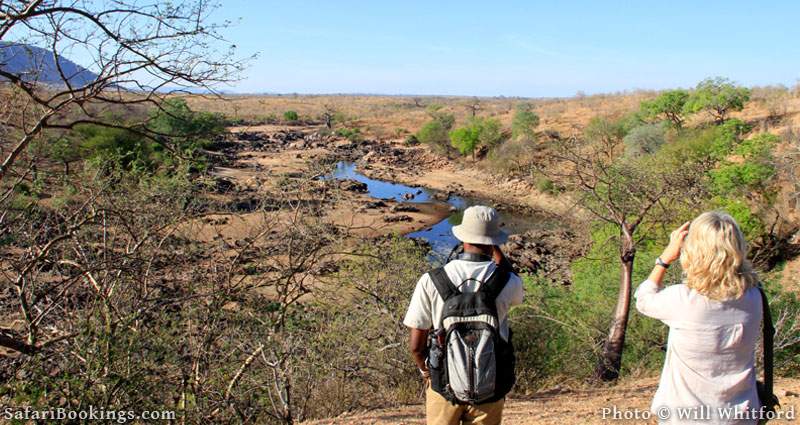
Spanning over 20,000 square kilometres, Ruaha is Tanzania’s second-largest national park. This vast tract of bush, about the size of New Jersey, is home to ten percent of Africa’s lions and East Africa’s highest population of elephants.
They’ve chosen a beautiful home. Skinny palm trees and bulbous baobabs dot the landscape bordered by distant hills and granite outcrops or kopjes. The Ruaha River is the heart of the park. Tumbling across rocky boulders in the wet season and transforming into a broad sand river when it’s dry, it’s a magnet for the wildlife.
Ruaha’s Wildlife
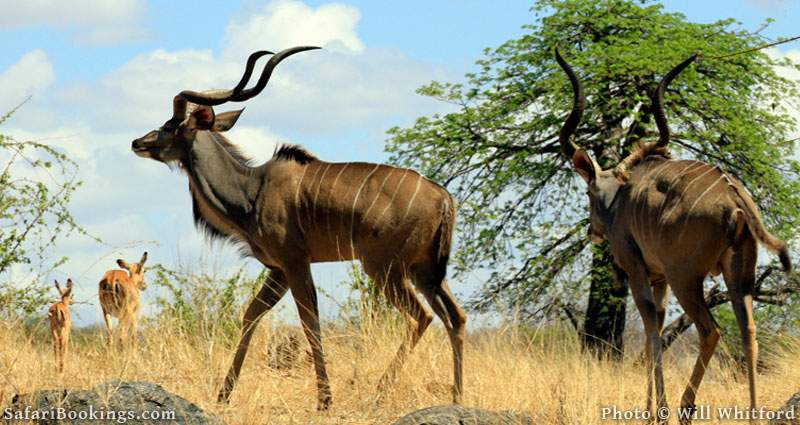
Ruaha is located on something of a transition zone where East Africa meets the south. As a result, the wildlife here is particularly varied – on game drives and walking safaris, you’ll see greater kudu with their vast spiralling horns, or perhaps roan and sable, all handsome antelopes. The birdlife too is immensely diverse with over 580 species recorded.

Despite its scale, Ruaha National Park is one of the best places in Africa to see rare and elusive packs of wild dog, quirky carnivores with strange saucer-shaped ears and distinctively patterned coats of brown, black and white. Leopards are regularly spotted, either resting in the trees during the day or prowling the plains at night. Look out for large prides of lions too, particularly around the Mwagusi and Mdonya Rivers.
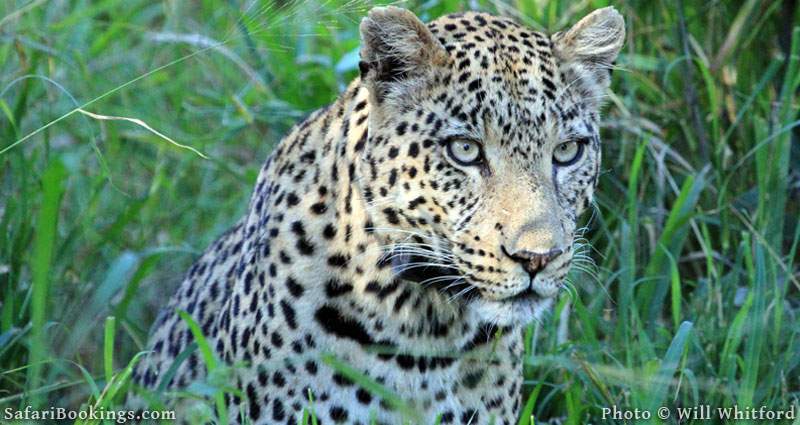
61 Ruaha National Park Tours 61 Ruaha Tours
Nyerere National Park

Nyerere National Park, a UNESCO World Heritage Site, is Tanzania’s largest national park: spanning some 30,000 km 2 . However, only a fraction is accessible to photographic safaris.
But don’t let this put you off. The Selous is a magical place of lush landscapes dominated by the river and a chain of lakes that make for excellent wildlife watching. As a reserve rather than a national park, it allows walking safaris, boat trips and fly-camping, all contributing to that special sense of discovery and a true wilderness experience.
Discovering Nyerere's Wildlife
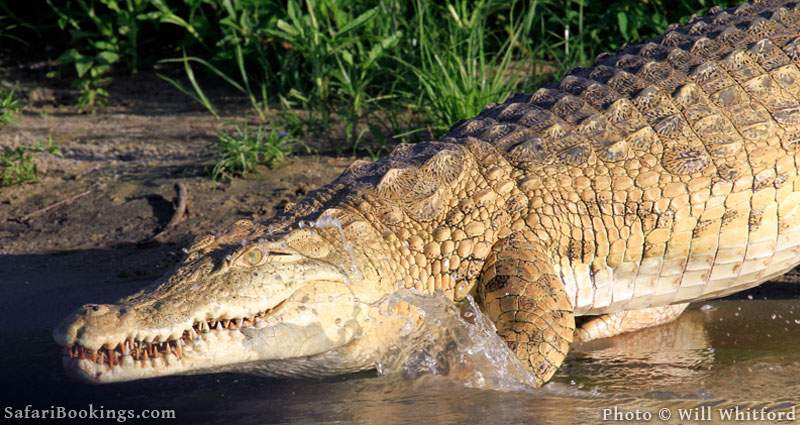
One of the best areas for wildlife is around Lakes Manze and Nzerakera to the east of the reserve. On boat trips, make sure you don’t dip your hand in the water – these lakes are home to hundreds of crocodiles which make for fascinating viewing as you sip your sundowner cocktails. Lions wait for prey to come to drink, hippos harrumph and hide underwater and all kinds of aquatic birds gather on the lake shore.

Walks around the reserve reveal the smaller creatures of the bush, such as the bugs and birds that you never really get to see in a vehicle. And on game drives, you’ll see plenty of larger creatures too. As with Ruaha, it’s one of the places where you might just spot the rare and elusive wild dogs, often in packs of over 20. Elephants were once prolific until poaching intervened, but look out for babies among the herds, a sure sign that the pachyderms are feeling more settled now. And giraffes are abundant here – they seem to be browsing around every corner.

201 Selous Game Reserve Tours
Ready to Book Your Southern Circuit Safari Tour?

One thing you won’t encounter in Ruaha National Park or Selous Game Reserve is crowds of fellow travellers. Both destinations have just a few lodges and camps scattered around the parks, ranging from contemporary luxury to simply rustic. They are all relatively small and intimate, enhancing that wild off-the-beaten-track vibe that Tanzania’s Southern Circuit is all about.
Find a fascinating safari tour to Ruaha and Selous in Tanzania’s Southern Circuit on Safaribookings.com.
About SafariBookings
SafariBookings is the largest online marketplace for African safari tours. Easily compare offers from top-rated tour operators. Make decisions like a pro by using our 103,267 reviews and 223 destination guides. More About Us
- Country Overview
- Parks & Reserves
- Popular Routes
- Tour Operators
Tanzania Safaris

3-Day Safari in Serengeti and Ngorongoro - Midrange
$1,045 pp (USD)

4-Day Safari from Dar Es Salaam to Zanzibar
$1,573 pp (USD)

12-Day Premium Luxury Safari&Beach Holidays All Inclusive
$4,983 to $6,188 pp (USD)
Tanzania Safaris by Type
- Chimp Tours
- Budget Safaris
- Luxury Safaris
- Family Safaris
- Camping Safaris
- Private Safaris
- Group Safaris
- Fly-in Safaris
- 7-Day Safaris
- 10-Day Safaris
- 14-Day Safaris
Best Time To Visit Tanzania
Parks & reserves tanzania.

Ngorongoro Crater

Serengeti National Park

Gombe National Park
Photo gallery tanzania.

Map of Tanzania
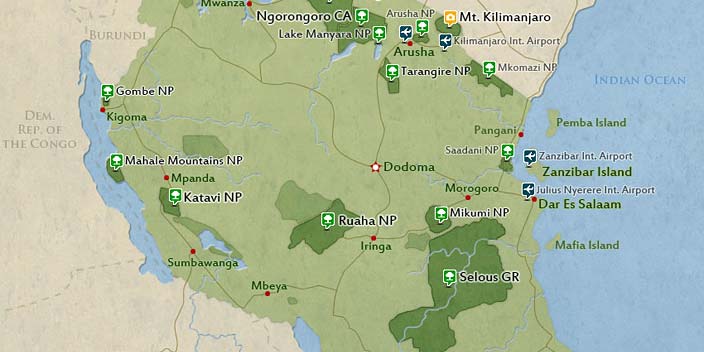
Most Popular Blog Posts
- Best Time for African Safari
- Best Safari in South Africa
- Family Safari in South Africa
- African Safari Tips
- Game Reserves Near Cape Town
- What to Pack for a Safari
- Best African Safari Parks
- Top 5 Best African Honeymoon Safaris
- Top 5 Best Tanzania Family Safaris
- Best Places to See Cheetahs in Africa
- How Much Does an African Safari Cost?
- Best Places To Visit In Africa in 2024
Blog Categories
Safari tours to tanzania.
Tanzania: Shared tour (max 6 people per vehicle) Tented Camp & Tented Bush Camp
You Visit: Arusha (Start) , Serengeti NP, Central Serengeti, Ngorongoro Crater, Arusha (End)
Kilipath African Safari Tour operator has an office in Tanzania
4.8 /5 – 42 Reviews
Tanzania: Shared tour (max 6 people per vehicle) Tented Camp & Hotel
You Visit: Zanzibar (Start) , Tarangire NP, Serengeti NP, Central Serengeti, Ngorongoro Crater, Dar Es Salaam (End)
Enjoy Rejoice Adventures Tour operator has an office in Tanzania
4.7 /5 – 15 Reviews
Tanzania: Private tour Lodge & Tented Camp
You Visit: Arusha (Start) , Tarangire NP, Lake Manyara NP, Serengeti NP, Ngorongoro Crater, Zanzibar (Beach) , Nungwi (Zanzibar) , Zanzibar Airport (End)
Lion King Adventures Tour operator has an office in Tanzania
5.0 /5 – 1018 Reviews

- Ngorongoro Crater
- Lake Manyara
- Great Migration
- Kilimanjaro
- Beaches & Islands
- Mainland Coast
Tanzania Safaris
The Great Wildebeest Migration
Tanzania Family Holidays
Tanzania Beach Holidays
Tanzania Honeymoons
Zanzibar Honeymoons
Zanzibar Beaches
Tanzania Activity Holidays
- Northern -
Itineraries
- Southern -
- Families -
- Honeymoons -
- Tanzania Guidebook
- In the press
- Tanzania Itineraries
- All Tanzania Lodges
- Pre-departure
- Work for us
Southern Circuit Travel Guide: Morogoro, Udzungwa Mountains & Mikumi National Park
23rd February 2013
Tanzania ’s Southern Circuit is often overlooked in favour of the popular northern circuit which is home to some of the country’s most famous national parks and game reserves. However, if you’re looking for an experience of Tanzania that will be far less crowded and more authentic, this area of the country is a fantastic place to explore.
Enjoy a safari in the Mikumi National Park before heading into the Udzungwa Mountains National Park for some hiking or admiring the scenery in Morogoro. In this article, we share our top recommendations for some of the best places in Tanzania’s Southern Circuit.
Mikumi National Park
96 miles south of Morogoro and north of the Selous Reserve lies Mikumi, the most accessible of all of Tanzania’s national parks. Mikumi National Park has the attraction of being an easy driving distance from Dar es Salaam with a couple of good options for accommodation, which makes it a fairly inexpensive option for a self-drive weekend safari in the scenic wide open savannah.
The park actually straddles the highway near the Uluguru Mountains south of Morogoro, and offers the chance of a brief safari thrill for anyone travelling through by bus or truck. Unfortunately, vehicles used to thunder through this 50km stretch heedless of the speed restrictions, and road kill has been a major problem. This has recently been addressed with the introduction of a number of brightly painted speed bumps that might increase the chance of seeing something still alive.
Wildlife in Mikumi National Park
Mikumi is remarkably the 3rd largest park in Tanzania, enclosed to the south and east with a semicircle of the Vuma Hills and Uluguru Mountains, rising to 2,743m. These look down across the wide, flat expanse of the Mkata flood plains, which provide a good spotting ground for a variety of larger animals.
Lion , leopard, elephant and buffalo range among the numerous baobabs and palms around the edge, while unusually large herds of up to 100 impala range across the plains. Towards the centre of the park, water collects into watercourses and swamps attracting hippopotamuses, as well as the odd monitor lizard and various water birds.
The close proximity to the northern border of the Selous means that a number of animals migrate between the two areas, including Lichtenstein’s hartebeest and African hunting dogs. The miombo woodlands in the southeast are also a stalking ground for sable antelope and families of shaggy white-collared Colobus monkeys, and herds of eland and small family groups of Greater Kudu may also be seen between these two areas.
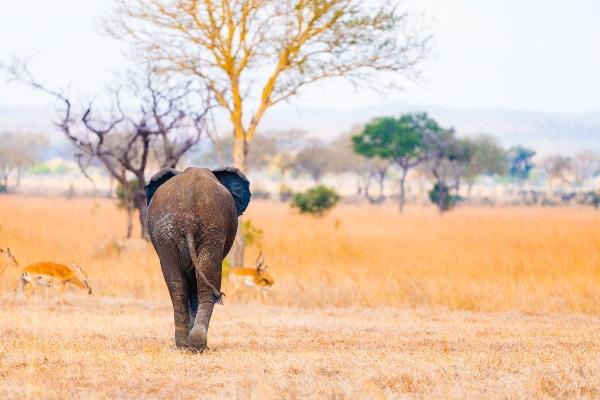
Morogoro town is a small but green and industrious agricultural market town in the lea of the Ulguru mountains with fresh mountain air, an abundance of fruit and veg and a relaxing, laid-back atmosphere. Its location between north and south, mid-way between Dar es Salaam and Dodoma, or on route to any westerly destination, makes it a bustling transit point and a welcome break for travellers passing through.
While there is little of specific interest in Morogoro town to merit a special journey, anyone exploring this route at an unhurried pace will find invigorating rural scenery to explore and a decent choice of accommodation alternatives. Others may wish to make the most of an opportunity to play a round of golf on the old colonial 9-hole course.
Beyond the town, the Morogoro region is a wild, rural expanse, with local cash crops of mainly coffee and sisal. The sisal is exported to Europe, the United States and China, and is used throughout Tanzania to make items such as rope, string, stuffing for mattresses and bags for coffee export.
The Kilombero Valley, just south of the Udzungwa Mountains and Udzungwa National Park, is especially rich in natural wildlife and grows an abundance of staples such as rice, maize, millet, fruit and vegetables, and sugar cane, which supplies two sugar factories in the valley. The local town of Ifakara is home to a number of extremely talented women who weave fabulous thick and colourful lengths of cloth on their looms and give visitors a far better price than they would get otherwise in Dar es Salaam.
History of Morogoro
Its central position and accessibility from the coast made Morogoro a colonial focus in the past. Typical indications of their residence remain evident in an old boma and numerous old churches, as well as wide streets lined with avenues of trees and second-storey balconies, along with a rather smart golf course in the scenic foothills of the mountains.
The town was the site of yet another exasperating evasion by German commander Paul von Lettow Vorbeck when he was pursued by Jan Christiaan Smuts, then commander of the British East African army, in 1916 during the East African events of WW1. Smuts, still entirely unaware of the distances over which von Lettow would elude him, was firmly smug in the opinion that his adversary would find himself trapped in Morogoro, because the Uluguru Mountains would inhibit their southerly progress.
The British troops were therefore mildly dumbfounded to discover the music that they had heard on approach was a mechanical piano playing in the Barnhof Hotel (now the rather dishevelled, government-run Savoy Hotel, near the railway station) and inside they found the Schutztruppe barracks horrendously defecated on and abandoned.
Economically, Morogoro struggled to find its feet until the middle of the twentieth century, after suffering the devastating effects of nationalisation on its factories during the 1970s. Although a familiar sense of dog-eared disintegration still clings around many of the old colonial stone buildings and crossroads, today its tree-lined streets are shady and cool, and the dusty roads are known to probably every transit lorry in the land.
The town now thrives on its popular reputation as a central agricultural market; the largest and most well-favoured market for fresh produce in the country. The old soap, oil and canvas factories that closed in the ‘70s have also recently re-opened under new schemes for privatisation. Now, this small town supplies the greatest proportion of its wares to vendors in Dar es Salaam.
What to See and Do in Morogoro
One of the main joys of Morogoro is its proximity to the Uluguru Mountains, which rise up around the southern reaches of this little town and provide excellent ground for easy forays into the unspoilt countryside.
There is also the very unusual and worthwhile botanical garden called ‘Rock Garden Resort’, which although small and largely untended, remains an impressively lasting gift from thoughtful Japanese benefactors. A minimal entrance fee allows you to follow the few paved stone paths through this strangely both natural and nurtured botanical ‘rock’ garden at leisure.
The paths lead to a bubbling river that dances through vast rock boulders, and parties of mothers and children wash and play beneath the pleasant shade of the palms and natural woodlands. It is a good place to relax if you have time on your hands, and is also the best option for anyone with their own tent to pitch in one of their clean and picturesque camping sites.
There is a café just inside the entrance gate, providing drinks, snacks and taped music in a friendly atmosphere. To get there, follow Kingalu Road southwards past the post office, just over 1 km beyond the Morogoro Hotel, and the Rock Garden Resort is signed on the right.
Guides for further excursions into the Uluguru Mountains can be arranged through the Rock Garden Resort or through Morogoro or Oasis Hotels. Anyone visiting the rock gardens may then find themselves inspired to climb higher and discover the even finer waterfalls and beauty that lies beyond.
Guides can be arranged for walks and hikes to popular destinations such as the old German villa called ‘Morningside’ in a scenic forest clearing just a couple of hours’ walk from the town. To get there is an interesting route from the town centre, following Boma Road southwards for about 10km and passing the old German Boma on the way, then meandering along the hill path past trees and streams.
Udzungwa Mountains National Park
The Udzungwa Mountains National Park is a sumptuous forested reserve that has recently been declared the sacred preserve of hikers and walkers. The land is ancient; a portion of the Eastern Arc mountains pushed upwards by faulting in the earth’s crust millions of years ago, and its steep slopes preserve a rare tropical forest that is home to a realm of unique plants, birds and animals.
It is also the only area in Tanzania where the forest cover remains unbroken from the lowlands all the way into the high mountain canopies. These forests are remarkably unspoilt; a wilderness of extremely beautiful woodland routes – with no driving tracks at all.
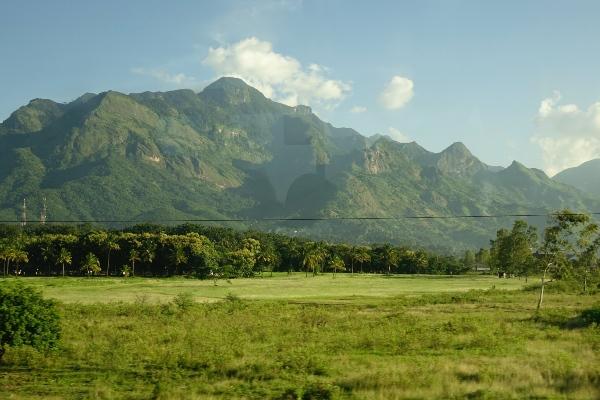
Udzungwa Mountains National Park – History
Udzungwa Mountains National Park is the most recently gazette
d of Tanzania’s National Parks, although it has been a forest reserve since the British created the Mwanihana and West Kilombero Scarp reserves in the early fifties. The park covers 1,990 sq km, almost one-fifth of the 10,000 sq km that comprises the Udzungwa mountain range, and is bordered by the Great Ruaha River to the north and Kilombero Valley to the southeast.
The present park was discussed for a decade before its creation in 1992, and is the first national park to be declared on the merits of its forests rather than animal population.
The base of these mountains dates from 450 to 650 million years ago, and the dense tropical forest that covers the mountain is thought to be a pocket of vegetation preserved from the time of the Gondwanaland supercontinent that existed up to 30 million years ago. Leaping forwards through the spectrum of time, archaeological finds around this area and Isimila have unearthed Stone Age hand axes and tools that were carefully crafted by hunter-gatherers.
The somewhat limited archaeological study that has been carried out here also provides evidence of a major migration through this area during the 1st and 2nd centuries, during which iron-working Bantu tribes progressed eastwards and displaced native hunter-gatherers.
Later, the Wadzungwa tribe, one of the 6 sub-groups of Hehe people who resisted German colonisation for seven years before the Maji Maji rebellion, were pushed out of the Iringa area by their fellow tribesmen and took up residence on side of the mountain. From the position of weakness that saw them succumbing to the pressure to move, the Wadzungwa found themselves in a stronger position around a richly fertile mountain, watered with abundant rain and spring source rivers. Their name means ‘people who live on the side of the mountain’, and the name Udzungwa has probably evolved as a result of another linguistic corruption by German interpreters.
Such a naturally attractive area has not been overlooked by other tribes from different areas and has attracted a large migration of tribes including the Wapogoro, the Wabena from the Upper Kilombero valley, some WaChagga from the region around Kilimanjaro and others. The people on the Eastern side of the mountain believe in a mountain god they call ‘Bokela’, and they use certain regions of the park for sacrifice and worship, especial
ly during hard times such as drought, disease and famine.
There was great unease when TANAPA started to assess the mountains, as it was thought that Bokela would be offended if the area was to be farmed or used for logging. Happily, it is now widely believed that Bokela is contented with the present situation, and supports this conservation of his mountain.
The late development of the national park has meant that it has benefited from recent TANAPA and CCS (Community Conservation Services) policies that take account of the people that will be affected by the conservation measures. The Udzungwa local communities have therefore not suffered quite as drastically as their country people surrounding previous national parks, and they have been party to a new policy of communication, consultation and compromise with regard to the implications the new restrictions will have on their lifestyle.
Local people have traditionally relied on the forests for centuries, using the wood for building, fuel, medicines, household utensils and weaving materials, honey gathering and utensils. Bamboo and reeds are used to make baskets for carrying agricultural produce, and animals such as the bush pig, tree hyrax and forest antelopes have traditionally been hunted for protein.
Since the national park was established, local people are allowed into the forests on Fridays and Sundays to collect dead wood for cooking and grass for thatching, but any form of axe or knife is prohibited within the boundaries. If you are between Kidatu and Mang’ula on either of these days you will see scores of women of all ages emerging from the forests with vast bundles of wood balanced on their heads. The load is often so great that it might exceed her own height and require the help of someone else to lift it into position. But once arranged, the women will often then carry it many kilometres back home.
The WWF is supporting an extensive reforestation program to educate and encourage the community to plant trees and seedlings, for both fruit and wood, around their land. Another concession grants those with practical knowledge of traditional medicines a three-month pass to gather the required ingredients from the forest.
There is a good atmosphere in this local enclave, slightly reminiscent of the mountain-dwelling communities around Kilimanjaro and Lushoto in the Usambaras. The mountains obviously once attracted missionary zeal, and there are a number of schools and various denominations of churches dotting the steeply sloping hillsides.
Yards are well-kept, and gardens grow fruit and flowers for decoration. Fat chickens and bright-coloured khangas give a good air of contentment and well-being here, and the road passes high numbers of lime stacks for burning limestone, showing a growth in construction and handmade housing.
Hiking in the Udzungwa Mountains National Park
Of the five official trails, just two bring walkers to the spectacular 170 m drop of Sanje Falls, with colourful and long-ranging views of up to 100km across the Kilombero sugar plantations and mosaic of grasslands from the top. The areas around the Sanje Falls become an incredible blur of butterfly colour after the rains in December, April, May and June, when flowers and air alike are often filled with hundreds of Swallowtails and Blue Salamis.
Another trail leads up to Mwanihana’s peak; a demanding but rewarding hike that demands a good degree of fitness from those who choose to climb. The highest peak of all is Luhomero, reaching 2,576 m (8,587 ft), above sea level, a distance requiring two nights and three days to climb there and back.
A number of rivers, streams and waterfalls make their way down these slopes into the Great Ruaha River, accumulating enough velocity to power the majority of the country’s electricity from the hydroelectric turbines at Kidatu and irrigate the crops to the south.
Rare Species in the Udzungwa Mountain National Park
Among all the species of wildlife in the Uzungwa forests, several have been found that are unique to this area.
Red Colobus Monkey
The endangered Iringa (or Uhehe) Red Colobus Monkey (Colobus Badius Gondonorum) is found here, and a much more rare and shy Sanje Crested Mangabey (Cercocebus Galeritus Sanjei), discovered in 1979 as a result of an unusual encounter by two wildlife ecology researchers from Dar es Salaam University. While collecting plants in the forest, they heard a strange sound that seemed to resemble a Mangabey monkey call, but as the next nearest populations of Mangabey are thought to be limited to those in forests in Southern Kenya, the researchers imagined that they were suffering hallucinations.
However, their Tanzanian guide described the animal that they had heard, although he only knew it as ‘n’golaga’, the Swahili name for the species, and clearly distinguished it from a colobus, vervet or Sykes monkey, or a baboon. When he took them to find some n’golaga in the forest canopy the next day, the researchers glimpsed the first sight of this unique species of Mangabey in the early morning mist.
Unlike the Kenyan species, the Sanje Mangabey has a pale face and light grey body, and stands about 0.75m tall, excluding its long tail. But the researchers wanted to get a better look and were delighted when their guide took them to see a tame n’golaga which had been adopted by local children after their father accidentally shot her mother when he mistook her for a yellow baboon.
The researchers knew that this species was unique, and were even more excited to discover its unusual tufty fringe, which seemed to indicate a very distinguished strain of Mangabey, until it became clear that the children had styled her Mangabey crest an extreme haircut, to keep the hair out of her eyes.
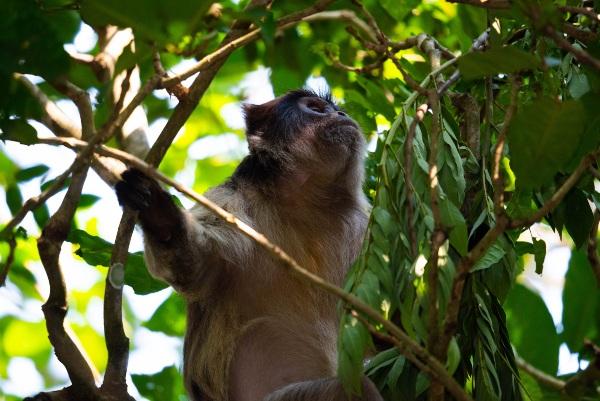
Udzungwa Forest Partridge
The other extremely rare species unique to the Udzungwas is a bird, the ‘globally threatened’ Udzungwa Forest Partridge, which was first recognised as a significant, unusual species of partridge in July 1991.
Legend tells how a researcher living in the forest had just devoured his partridge supper when, on closer inspection, he realised that the bird was unfamiliar, and for a time became concerned that he might have eaten the last one. Fortunately, although still rare in the Udzungwa forests, the Partridge has since been spotted more frequently in the west of the National Park, and recently also near Luhomero Mountain.
The Udzungwa Partridge is just one of many extremely rare bird species in this region, such as the Iringa Akalat (Sheppardia Montana), mainly spotted between 1,600 and 2,400 metres in regions around the outskirts of the National Park. There’s also the White Winged Apalis, (Apalis Chariessa), which may be seen feeding among other birds on the forest floor.
The recently discovered Rufous red-winged sunbird (Nectarinia Rufipennis) was identified here in 1981, and is more common in the forests between 600 and 1,700 metres. It joins two other very rare species of sunbird in the Udzungwa forests, the Amani (Anthreptes Pallidigaster) and the Banded-green sunbird, (Anthreptes Rubritorques).
Other rare species exist in the Udzungwas in denser populations than found elsewhere, such as the Dappled Mountain Robin (Arcanator Orostruthus) the Olive-flanked ground robin (Cossypha Anomala), the Black-backed Cisticola (Cisticola Eximus) and the Red-Capped Forest Warbler, (Othotomus Metopias).
Another pretty bird common to the area is the red-brown-headed Mrs Moreau’s warbler, (Bathmocercus Winifredi), named by the highly acclaimed African ornithologist R.E Moreau after his wife, Winnifred. The Moreaus were also responsible for naming another warbler after a family member, when they called a small tail-wagging warbler after their daughter, Prinnia.
Reptiles and Amphibians
Five amphibian and reptile species have also been discovered to be unique to the area, including a new species of toad, a tree frog, a chameleon, a forest gecko, (Cnemaspis Uzungwae) and a skink. The tiny Udzungwa Puddle frog, with its distinctive band across its eyes, was distinguished and recorded in 1983.
If you’ve been inspired to explore the Southern Circuit of Tanzania, Tanzania Odyssey is a specialist tour provider that can help you to plan a tailor-made tour of the country that offers an unforgettable experience of this part of Africa. Take a look at our southern Tanzania tours or get in touch to find out more about how we can help you plan your trip.
Related Posts:
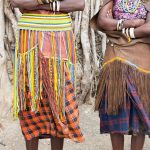
Related Articles
The Cadogan: A Complete Travel Guide to Tanzania
A travel guide to central tanzania: tabora, dodoma & kigoma regions, a guide to the selous game reserve: history, wildlife & landscapes, south from kilimanjaro travel guide: pare and usambara mountains, southern highlands travel guide: ruaha national park, mbeya & iringa, ngorongoro conservation area, tanzania: history, tribes & more, tanzania’s northern circuit safari guide: all you need to know, a guide to tanzania’s national parks: arusha, lake manyara and tarangire, a travel guide to serengeti national park, tanzania, history and travel itinerary to stone town, zanzibar, zanzibar history, festivals and religion, travel guide to zanzibar: understand the island’s map, travel guide to pemba island, tanzania: history and things to do, travel guide to mafia and chole island, tanzania: history and things to do, travel guide to kilwa kisiwani, tanzania: history and things to do, travel guide to bagamoyo & saadani game reserve, tanzania, the south coast of tanzania: lindi, mikindani and mtwara, tanzania history: from pre-history to the 20th century, travel guide to tanga, tanzania: things to do & history, tanzania’s culture: people, language, tribes and religion, a 2020 safari with nomad tanzania, kenya vs tanzania safari, the indian ocean coast – saadani game reserve, history of tanzania – early history.

Tanzania's Southern Circuit
Travel guide.
- Things to Do
Things to Do in Tanzania's Southern Circuit
Were they relocated to practically any other African country, the diverse cluster of national parks and game reserves set in the scrubby southeast Tanzanian lowlands and lush Lake Tanganyika hinterland would form the cornerstone of a national tourist industry. As it is, however, the fine reserves of the southern and western safari circuits inhabit the same country as the Serengeti, Ngorongoro Crater, Lake Manyara, Mount Kilimanjaro, Zanzibar, and other big names of the Northern Circuit, and they are overshadowed by them completely. The Southern Circuit attracts a tiny fraction -- recent statistics suggest as few as 1% -- of tourists who visit Tanzania.
So much the better for those adventurous souls who forsake the well-trodden attractions of the northern safari circuit and instead head south. For here they will find the most untrammeled safari circuit of comparable quality anywhere in Africa -- a complex of parks and reserves whose combined area of more than 77,000 sq. km (30,030 sq. miles) is serviced by a mere two dozen exclusive bush camps boasting the collective bed capacity of the average urban Hilton or Sheraton.
The centerpiece of the south, the immense Selous, is the largest game reserve in Africa, and it offers a more varied menu of activities than any northern reserve, with motorboat trips on the mighty Rufiji River, expertly guided walks, and wild fly-camping expeditions supplementing the more standard fare of twice-daily game drives. In pure game-viewing terms, Selous takes second place to Ruaha National Park, a rugged baobab-studded thirstland notable for its high predator densities and unusually varied selection of antelope and other ungulates.
The area has two other fine safari destinations in the form of Mikumi and Katavi National Parks, whereas the Mahale Mountains and Gombe Stream, set on the scenic shores of Lake Tanganyika, offer the world's best wild chimpanzee viewing. More esoteric attractions include the forested slopes of the Udzungwa Mountains, home to a dazzling array of endemic birds and mammals, and the brooding island-bound ruins of Kilwa Kisiwani, relics of the most important medieval gold trading center anywhere along the Swahili Coast.
National Parks And Monuments

- All Regions
- Australia & South Pacific
- Caribbean & Atlantic
- Central & South America
- Middle East & Africa
- North America
- Washington, D.C.
- San Francisco
- New York City
- Los Angeles
- Arts & Culture
- Beach & Water Sports
- Local Experiences
- Food & Drink
- Outdoor & Adventure
- National Parks
- Winter Sports
- Travelers with Disabilities
- Family & Kids
- All Slideshows
- Hotel Deals
- Car Rentals
- Flight Alerts
- Credit Cards & Loyalty Points
- Cruise News
- Entry Requirements & Customs
- Car, Bus, Rail News
- Money & Fees
- Health, Insurance, Security
- Packing & Luggage
- -Arthur Frommer Online
- -Passportable
- Road Trip Guides
- Alaska Made Easy
- Great Vacation Ideas in the U.S.A.
- Best of the Caribbean
- Best of Mexico
- Cruise Inspiration
- Best Places to Go 2024
THREE WAYS TO PLAN AND BOOK YOUR SAFARI WITH AFRICANMECCA
TRAVEL & OPERATIONS OFFICES
- United States
- United Kingdom
SOUTHERN SAFARI CIRCUIT
Explore the south safari circuit in tanzania. scroll down for details...
- Travel Guide
- Parks Reserves
Learn More On AfricanMecca Safari Tier Ratings & Experiences
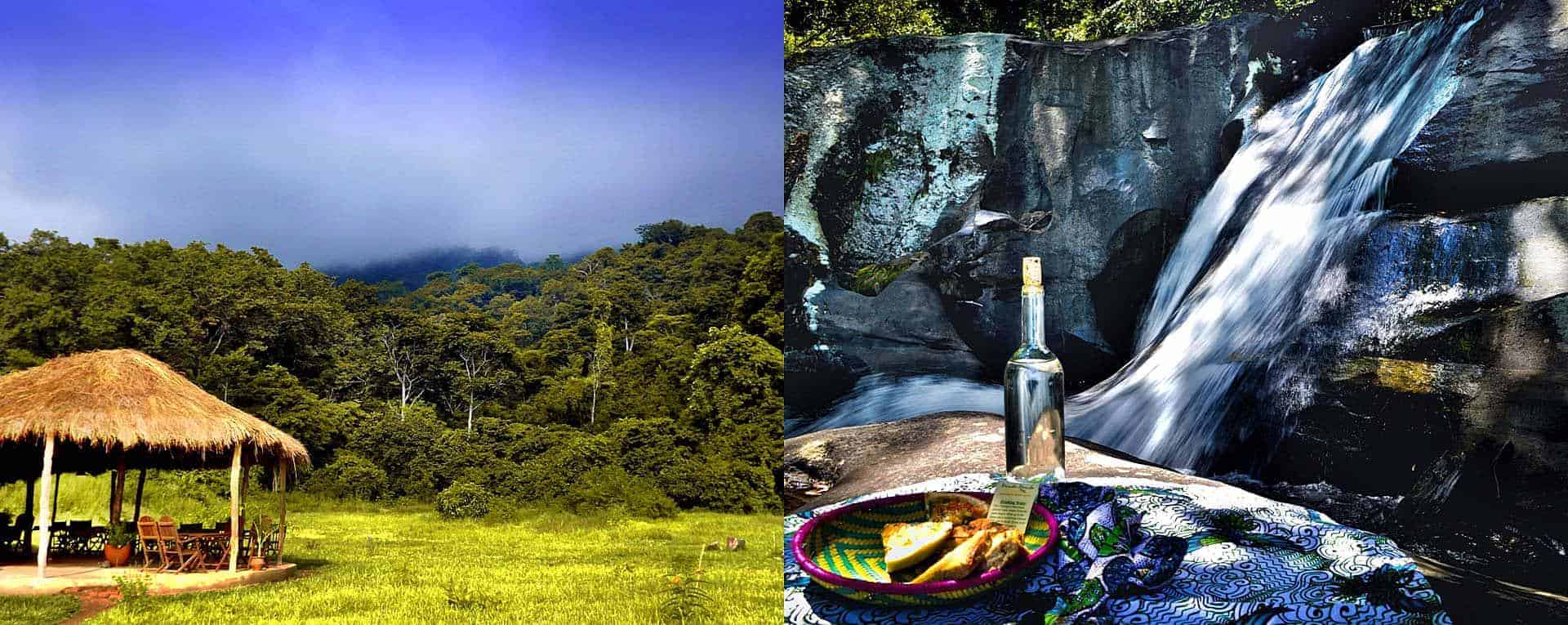
Read More +
Serengeti national park.
Across the vast Serengeti plains, a fantastic cast of wild fauna including impressive numbers of hooved herbivores, predators and avi-fauna. Amongst them, the principal actors are wildebeests.
NGORONGORO CRATER
Sited in the Great Rift Valley in northern Tanzania, the Ngorongoro Conservation Area includes the wondrous Ngorongoro Crater, home to the densest concentration of wild animals in Africa.
TARANGIRE NATIONAL PARK
The river and swamps of Tarangire provide permanent water sources when surrounding shallow lakes dry up, thus attracting a migratory movement of up to 250,000 mammals during the dry season.
LAKE MANYARA NATIONAL PARK
Lake Manyara is one of the smallest parks, but encloses within its numerous microclimates a diverse range of landscapes and animal populations which mirror those of different parts of Tanzania in miniature.
KILIMANJARO NATIONAL PARK
Kilimanjaro, the shining mountain, floats in a wreath of cloud above the vast South Amboseli plains (a.ka the Western Kilimanjaro wilderness), offering an amazingly diverse series of fauna and habitats.
ARUSHA NATIONAL PARK
Situated in northern Tanzania is the little-known treasure of Arusha National Park that features a variety of ecosystems, such as grasslands, swamps, crater lakes, highland forest and more.
RUBONDO ISLAND NATIONAL PARK
Rubondo Island National Park is located in the southwestern region of Lake Victoria (northern Tanzania) - the largest in Africa, second largest lake in the world and the source of the Nile River.
In the southwest corner of the Ngorongoro Conservation Area and home of the ancient Hadzabe and Datoga tribes is the beautiful Lake Eyasi, a soda lake that is fed by the Sibiti and Baray Rivers.
LAKE NATRON
Located just seventy miles northwest of Arusha is the alkaline Lake Natron. The lake is the breeding ground for lesser flamingo, with more than two million individual birds flocking to the area.
LAKE VICTORIA
The largest lake in Africa and the largest tropical lake in the world, Lake Victoria, offers you two thousand miles of beautiful coastline for your lake safari in northern Tanzania with AfricanMecca.
SELOUS GAME RESERVE
Selous is Tanzania's richest, yet little known and unfrequented wilderness area, where it is still possible to feel the isolation, the vastness and the splendor of authentic travel in Africa as it once was.
RUAHA NATIONAL PARK
Ruaha in southern Tanzania is one of the most awe-inspiring and untouched African safari destinations. An incredible total of 64 mammal species inhabit the park, including varied predators and prey.
MIKUMI NATIONAL PARK
Although Mikumi National Park, part of the northern Selous ecosystem, is one of the oldest and fourth largest in Tanzania, it has not become a focus of mass wildlife tourism, despite its ease of access.
MAHALE NATIONAL PARK
Mahale Mountains National Park in western Tanzania is an outstanding African wilderness on many counts. The park is justly famous for over 800 wild chimpanzees, more than any other park in Africa.
KATAVI NATIONAL PARK
Only a few hundred privileged and seasoned African safari enthusiasts can visit Katavi National Park each year. Arguably the most remote, finest and unspoiled wildlife haven in Tanzania.
GOMBE STREAM NATIONAL PARK
Pioneered by the works of Dr. Jane Goodall, Gombe is a dream chimpanzee wilderness where it is possible to take guided treks to watch wild chimps both at play and interacting socially.
LAKE TANGANYIKA
Tanganyika is arguably the most beautiful Great Lake in Africa, formed in the Great African Rift Valley, with long, deserted beaches of silver sand backed by tropical forest on chimpanzee habitat mountains.
CONTACT AND TALK TO OUR SAFARI EXPERTS TODAY TO KICK-START YOUR TOUR PLANNING PROCESS
Request Tanzania Custom Or Tailor-Made Safari Pricing Based On Your Specific Travel Dates At Your Preferred Safari Tier Camp Or Lodge
SAFARI PRICES FOR TANZANIA
Review Tanzania detailed itineraries and prices of our recommended safaris with the option of customizing your Africa tour based on your preferences and needs.

AFRICA TRIP IDEAS FOR TANZANIA
Review experiences available in Tanzania from photo wildlife safari, chimpanzee tour, bush walk, family to honeymoon beach vacation, snorkeling, diving etc.
PARKS & RESERVES IN TANZANIA
Review information on wildlife parks and reserves in Tanzania i.e. Serengeti, Ngorongoro, Tarangire, Ruaha, Manyara, Selous, Katavi Gombe, Mahale and more.
ACCOMMODATIONS IN TANZANIA
Review information on safari camps, lodges, city hotels, beachfront resorts in Tanzania's pristine wilderness, cities, Swahili coastal shores and idyllic islands.
BEST TIME TO VISIT TANZANIA
Review details on the best time to go to Tanzania to visit its various wildlife outback, lakes, rivers, beaches, islands, mountains, forests and other wildernesses.
BEACHES & ISLANDS OF TANZANIA
Review Tanzania's unspoiled white, sandy coastal beaches and idyllic islands backed by tropical forests that are lapped by the azure waters of the Indian Ocean.
TANZANIA COUNTRY PROFILE
Review country information and travel tips on Tanzania i.e. climate, history, geography, culture, entry requirements, what to pack and wear, tipping guide and more.
CITY DAY TOURS FOR TANZANIA
Review city tour recommendations on full or half day options in Dar es Salaam, Arusha, Zanzibar. Experiences can be customized around your vacation travels.
AFRICAN SAFARI PRICES
Check out safari prices and itineraries for parks and reserves in other African countries e.g. Kenya, Uganda, Rwanda, Botswana, South Africa, Zambia etc. Namibia, Mozambique, Malawi and Zimbabwe are available on request.
AFRICANMECCA REVIEWS
AfricanMecca's professionalism and care understands that what distinguishes Africa is its authenticity, the land, people and wildlife who do not share our world of fashion and fanfare that distinguish so many travel companies today.
Cyril Christo & Marie Wilkinson, Conservation Photographers, Authors & Wildlife Documentary Producers - USA
Jambo Raza, We all had a fantastic time on our Tanzania safari. Accommodations were excellent and we loved our guide - Rodgers. We will definitely recommend this safari to others. Thanks for all your help making the arrangements.
Dr Thomas Davis, Methodist Hospital, Minnesota, United States
AfricanMecca Safaris created a remarkable honeymoon tailored to our interests and desires. The quality of service and delivery of experience was unsurpassed. I highly recommend AfricanMecca Safaris to honeymooners, families, or any traveler.
Noorin & Jason Nelson - Maryland, United States
Thanks again to you for arranging a wonderful trip for us. Everything was great from the fantastic wildlife, the scenery, the people, the accommodations and the food. The safari was everything we had hoped for.
Liz and Gunnar Kristiansen - Ontario, Canada
I booked my safari holiday through AfricanMecca. They were the most helpful company I have ever dealt with and I work within the travel industry. I had the most amazing time. The holiday went as clockwork with no hitches anywhere.
Shelley Roberts - Hemel Hempstead, United Kingdom
We have returned from our African adventure and would like to thank you very much for your part in making this such a wonderful experience. We were lucky enough to time the Great Migration from the Serengeti, which was amazing.
Denise Paterson - Belmont, Australia
We had an absolutely amazing trip in Arusha, Serengeti and Gombe - everything went smooth as silk. Thank you so much Raza for making this trip, the trip of a lifetime. We had an absolutely brilliant time.
Tiffany Heitz & Lesley Smith - California, United States
East africa safari booking & tour holiday idea tanzania.
When visiting Tanzania, we recommend combining your safari to Serengeti , Ngorongoro Crater , Tarangire and Lake Manyara with an extension out to Southern or Western parks like Nyerere (Selous) , Ruaha , Katavi or Mahale - Gombe ending with a beach vacation and Swahili cultural tour in the exotic spice island of Zanzibar , Pemba , Mafia or Fanjove . You can also day trek or climb the highest mountain in Africa - Kilimanjaro .
Kickstart Your Safari Planning
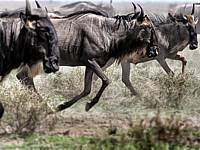
SAFARI PRICES
Find Tanzania Safaris & Costs By Safari Tier Experiences
Safari Room Rate & Hotel Price Guide For Tanzania
Tanzania Reviews For Camps, Lodges, Beach & City Hotels
Park, Cities, Beach & Island Map Locations In Tanzania
PHOTO GALLERY
Images & Pictures For Travel Destinations In Tanzania
VIDEO GALLERY
Tanzania Accommodation & Tour Destination Videos
ARE YOU PLANNING TO BOOK AN AFRICAN SAFARI TO TANZANIA?
Do You Need Knowledgeable, Experienced & Specialist Guidance For Your Travels In Tanzania? Let Us Help Plan Your Trip Itinerary Correctly
EXPLORE MORE ON NATIONAL PARKS, CAMPS, LODGES, BEACHES & RESORTS IN TANZANIA
Safari tier ratings.
Understand Beach Tier Ratings & Experiences
TANZANIA PARKS & RESERVES
Tanzania Beach & Island Planning Guide
TANZANIA LODGES & CAMPS
Beachfront Hotels & Resorts In Tanzania
Top 10 Trip Reasons For Tanzania Vacations & Holidays
HAVE YOU VISITED EASTERN AFRICA FOR A SAFARI IN TANZANIA?
Write A Travel Or Tourist Trip Review To Share Your Experiences
TANZANIA TRIP IDEAS
Safari Trip Ideas For Tanzania
AFRICA SAFARI PRICES
Check Our Africa Travel Guide
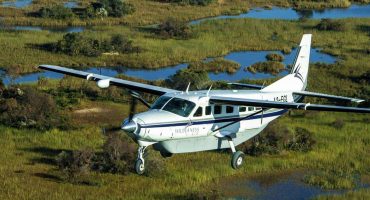
Baggage Guidance & Restrictions On Flying Safaris In Africa
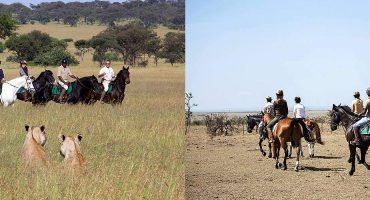
Masai Mara Horseback Riding Safari In Kenya With AfricanMecca
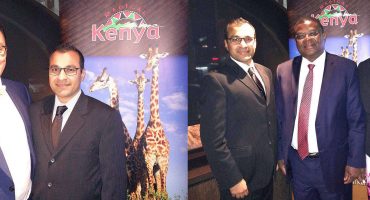
Times Square New York Hosts Kenya Tourism Board & Wilderness Safaris Meet Up
- Company Profile
- Why Travel With Us
- Our Safari & Tour Team
- Tier Ratings
- Awards & Press
- Customer Reviews
- SEARCH For Africa - Sustain & Conserve
- Travel Agent Support
- Jobs & Careers At AMS
- Newsletter Signup
- Contact Details
- Tanzania Travel Guide
- Kenya Travel Guide
- Uganda Travel Guide
- Rwanda Travel Guide
- Botswana Travel Guide
- South Africa Travel Guide
- Zambia Travel Guide
- Zanzibar Travel Guide
- Safari Trip Ideas
- Beach Trip Ideas
- Mountain Climb Trip Ideas
- Itinerary Trip Ideas
- Explore Park & Reserves
- Accommodations In Africa
- Read Trip Reviews
- View Photo Gallery
- View Video Gallery
- Read Our Blog
- Safari Prices & Itineraries
- Beach Prices & Itineraries
- Trek Prices & Itineraries
- City & Day Tours Prices
- Room Rate Guide
HOW TO CONTACT US

Call Us : 612-201-4461
- About Tanzania
- Union of Mainland and Zanzibar
- Founding Philosophy of Tanzania
- Commitment to Communities
- What Makes Us Unique
- Tanzania and the Serengeti
- Tanzania National Parks
Our Approach
- Honeymoon and Family Safaris
- Photographic Safaris
- Under Canvas Safaris
Extension options
- Gorilla and chimp trekking
Tanzania’s Southern Circuit
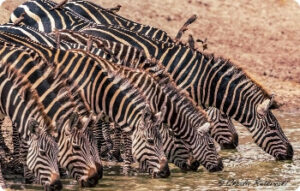
- Start Planning
Years ago, Unique Safaris would travel with our own vehicles and guides to some of the southern National Parks such as Ruaha, Mikumi and Nyerere (formerly known as Selous Game Reserve).
However, the price of fuel has made this impractical but we are able to book your flights and accommodations to any southern parks and you will be handled on all game drives by the staff of each property.
A More Private Experience
There is a difference between the northern and southern circuit so there are pluses and minuses. The southern parks of Tanzania are very hot and most wildlife is active only in the early morning and late afternoon. While there is great wildlife in these parks you will drive longer to find animals because they are not found in large numbers like you see on the northern circuit of Tanzania. While you experienced private vehicles on the northern circuit, the southern accommodations provide shared vehicles with other accommodation guests joining you. There is a greater sense of privacy however because there are far fewer numbers of tourists that visit some of the southern parks. Ask your safari specialist for more information if you would like to experience.
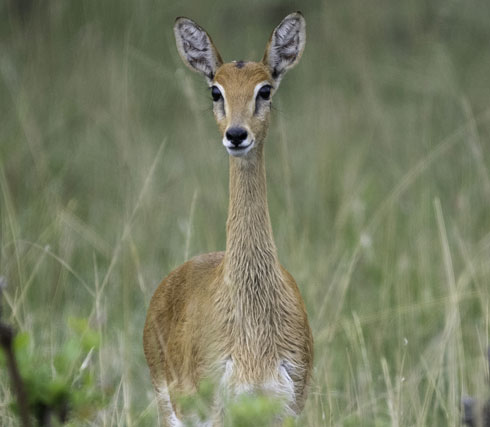
Reviews From Visitors
Bucket List. The friend I traveled with on this adventure has been my friend for 55 years. This was her number 1 item on her bucket list. When I told her I would go.....she started planning. Within 15 or so months......we were off. And I couldn't be happier.
The camps we stayed at were all top notch. The food was great and very abundant (even the breakfast and lunches we ate on the road). I don't eat that well at home. The pancakes at Sametu were the best I have ever eaten.
We couldn't have done this without the help of Lynn's planning expertise. She helped us every step of the way. Giving tips and making sure that we stayed on task. I feel like I have made a friend. She was fantastic. Our safari was specifically planned for us. We decided what we wanted to see and Lynn helped us plan this perfect trip.
When Joseph and Ester came to go over the trip with us in Arusha, I knew it was going to be wonderful. They explained everything that would happen at each camp so there would be no surprised. And Joseph met us at the end and made sure that we had gotten through to the gate at the airport. Unique Safari was with us from the first minute in Arusha to the last. This was very comforting. I am a person who likes to plan ahead and have everything ready. I never had to worry about anything....they did it for me.
Now to talk about our guide FAZAL. Words cannot express what an adventure he gave us. He asked what we wanted each day, and our response was always "You're the expert you tell us". And we are so happy we did. I can tell you that we saw some amazing things. Actually every night, I asked him how he was going to top that tomorrow. My advice to anyone planning a safari would be to trust the people who are the experts. Fazal taught us not to rush through any experience. Sometime you have to wait to see the best part of an animal.
I was very excited to go on this Safari but it was 100% more than I expected, The saddest part of this trip was when we said good bye to Fazal at the airport. There were definitely tears.
Unique Safari is the complete package HANDS DOWN!!
This trip was postponed due to, well you know. It was well worth the wait. Unique Safaris was top notch and the Guides, Russell, Shedrack and Fazal were knowledgeable, funny and willing to help us get the best experience and the best photos every day. They even helped me learn firsthand about some of the local flora (don't step on these). Our camps and their staffs were excellent and the people of Tanzania were friendly and helpful. You will not be disappointed using Unique for your safari needs also they are a locally owned company so you will help support their economy and businesses.
Traveling the world in a pandemic can be tricky but Meg K. of Unique Safaris did a wonderful job helping us in our safari travel to Tanzania. She kept us up to date on all of the requirements and gave us links to the forms that were needed. She arranged for our covid test prior to leaving Tanzania. She got us a service that whisked us through covid testing, immigration, and customs at the airport. On Safari, all of the camp staff not only went out of the way to make us comfortable but were very conscientious about all of the covid requirements. The highest praise has to go to our guide, Ellison. He got us into position for many a great photograph and didn’t complain when we asked him to move a foot or two so that we got a cleaner image. He was very knowledgeable about where the animals could be found, so we were treated to baby hippos, lion cub, leopard cubs, cheetah cubs, and a myriad of young antelope and zebra. The Mara River crossings were more spectacular than the Great Migration that we saw when we went to Tanzania March 2020. Photographically it was the best photo tour we had ever been on, totally Unique.
Absolutely the best vacation we have ever taken!!!!!! Lynn is what makes this trip so incredible! Her attention to every detail in planning the experience you want, her communication with you is impeccable! I truly cannot thank her enough! Once we arrived - all the planning Lynn mapped out for us, just played out more amazing then we could of ever imagined. Our guide, Russell was outstanding! He was kind, considerate, and so knowledgeable about every single question we asked him. And we asked a lot of questions!!! He really knew the area, animals, and the culture, etc. All the tented camps, food, transfers, and every detail is taken care of by Lynn. We simply showed up and had the most amazing trip of our lives!!! We are already planning a return very soon, Lynn and Unique Safari will be helping us again!!!
I am a US based photo safari workshop leader and to say Unique Safaris provided me and my clients the ultimate luxury safari experience would be an understatement!!! Top that with highly knowledgeable safari guides and it makes for an unforgettable experience. Meg helped me choose my camps based on my needs and boy were they a home run. I couldn't say more about how friendly and accommodating the staff was at each location during the two weeks. Absolutely top service from top to bottom with the Tanzanian staff, guides. and people as a whole absolutely warm and inviting. Looking forward to my return in 2022 and beyond!
If you are considering going on that "once in a lifetime" trip to Tanzania, do yourself a favor and use Unique Safaris. I travel a LOT and Unique is a company that can be trusted and they will make sure your trip is fabulous. I just returned from a 2 week safari and I can't say enough good things about the drivers and camp staff. There were 11 of us on this trip and everyone had a great experience. The tears and hugs when we left our drivers at the airport to go home said it all.
I wanted to take my daughter on safari as her graduation gift, but also wanted a strong focus on the photographic element as a photographer. Yes, I shopped other safari companies too. Lynn at Unique safaris did an amazing job of putting together a custom trip which included cultural activities, balloon rides, and the best game viewing opportunities ever. I made the right choice and am so grateful I did. The staff in Arusha matched us with a guide based on all the info we had provided. Bernard proved to the best guide we could have asked for. He took his job and professional responsibilities very seriously, and yet was able to join in the fun, banter and laughs. The lodging chosen was superb and the food unbelievable good; both roast duck and lamb on New Year's Eve-and we were hours out in the bush. The attention to detail from Lynn in trip preparation, availability and quick response to questions as well as the follow-through on those promises by the Arusha staff make this unquestionable the safari company of choice.
My wife and I just returned from our safari in the Serengeti with Unique Safaris. Ally, our guide, was fantastic in locating animals and birds during our trip. He was able to drive to locations that other guides would NOT attempt due to it being the wet season and some of the roads (basically dirt tracks through the Serengeti) were covered with water and had terrible holes that you could not see until you hit them. The difference with Unique is they use Mud Terrain tires not All Terrain tires like the other safari companies. Other companies stay on the main roads so you see the animals 100 yards away with 15 vehicles parked on the road while we were able to go to more isolated areas and get up close to the animals. Up close being lunch with a large price of lions and 5 lion brothers s walking by our vehicle and hitting it with their tails. We were able to see everything that we had on our wish list as well as gain a better appreciation for the birds in the Serengeti.
We stayed in tents while we were there so the animals were VERY close. The animals can get noisy at night so be prepared to wake up occasionally. One morning we woke up to the sounds of 8 lions taking down a wildebeest about 50 yards from our tent. Our guide had to pick us up for breakfast that morning in our vehicle since the lions were so close. When you stay in the tents you will need someone from the camp to walk with you when it is dark. Also as a treat Ally arranged for us to meet with a Project Cheetah expert researcher who gave us a much better insight into the amazing animal.
I usually do not write reviews but the difference in companies is significant. If you want to see a few animals with the crowds then Unique is not for you. If you do not mind getting bounced around in the vehicle to get to isolated areas and truly experience the Serengeti then Unique is your best option.
Meg did a good job working with us to get within our budget. I would recommend working with her to get within your budget rather than settling for a less expensive nondescript safari.
This was truly an exceptional once in a lifetime experience and Unique Safaris made all the difference. We also met the owner while on safari, and Ali was engaging and made us feel very welcome.
Latest From the Bush
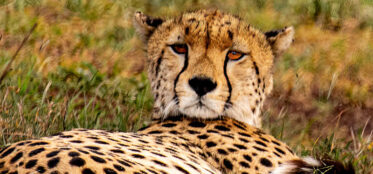
What to Expect on Luxury Safari in Tanzania?
Imagine the exhilarating thrill of locking eyes with a lion, feeling the thunderous vibration of a stampeding…
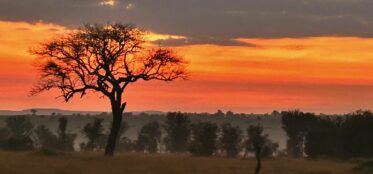
Marianne and Lou’s Safari
When we began planning our African adventure, we turned to friends who lead photography workshops in the…
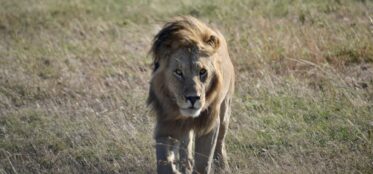
Lion Encounter
Klara Eckman – Age 14 My family and I had a wonderful time on safari! I have…

Southern Circuit
Tanzania National Parks – Southern
Mikumi National Park Say Mikumi and it’s hard not to think of the arterial road that slices its way through the park. Of course this is to belittle the park and there’s more to it than just road kill. Mikumi is one of Tanzania’s smallest southern parks and is located just to the east of the Uluguru Mountains. It shares a border with the Selous Game Reserve to the south and therefore, as you’d expect, has many of the species in common with those found in the Selous. Mikumi does have some excellent game; leopard, lion and even hunting dog are found here as well as elephant and plenty of plains game. The best way to visit the park is almost certainly as part of a safari to include the Udzungwas and Ruaha which can be done by air, or, if you’re feeling up to long journeys, by road. In this context Mikumi makes very good sense for a couple of nights.
Selous Game Reserve Vast remote and wild, the Selous is the largest game reserve in Africa and a dramatic contrast to other parks in Tanzania in almost every way. It’s one of Tanzania’s lesser known destinations, but offers a grass roots level of experience that few other places can equal. It’s also home to an intriguing diversity both in terms of animal life and variety of experience on offer.
The contrast between the Tanzania’s northern parks and the Selous couldn’t be greater. The Selous is at only a few hundred feet above sea level instead of several thousand and this difference is reflected in flora, fauna and climate. Grassland and kopjes are replaced by woodland, interlaced with flood plains, sand rivers, oxbow lakes and the truly impressive Rufiji River. The river is a major focal point, its character changing from the vast inland delta of wide shallow sand rivers, lined with thick bush and palms, to the dramatic rock sided Stiegler’s Gorge, where the river narrows from over a mile to less than a hundred metres wide.
The network of sand rivers is one of the most exciting areas to explore in the dry season. Driving in a Safari Vehicle or walking along dry riverbeds miles from the nearest road feels properly wild, and there is no shortage of game in these areas. Many species are drawn to the sand rivers, either for water, which constantly flows beneath the surface and which elephants dig holes in the sand to reach, or for the lush vegetation which grows along the river banks, or in the case of lion, as a place to lie in ambush for the herds of buffalo which come to drink in the river beds. As well as game driving safaris and boating safaris in this very beautiful and unique area, this is one of the places where one can walk and camp most freely. Whether on a wilderness walking safari for a number of days, or camping out for a single night as part of a stay at a permanent camp there is a great diversity of habitats to explore, from islands in the middle of the Rufiji river to the shores of one of the many lakes, to the bed of one of the dry sand rivers. It’s well worth taking advantage of being able to walk, even if you don’t want to go far. Just make sure you spend some time on your feet in the bush.
Sadaani National Park Saadani National Park is relatively small at just 1000sq km, but it’s highly unusual in Tanzania, in that it lies right on the coast. Sadaani is somewhere there’s a real possibility you could see elephant and other mammals on the beach (not your normal beach holiday then). It’s situated between Dar es Salaam and Tanga and its principal features are the beach and the Wami River, which winds its way in a series of story book meanders to meet the Indian Ocean just a short distance north of Dar es Salaam. Saadani is Tanzania’s newest national park and you wouldn’t want to come here expecting the concentrations of animals you get in some of Tanzania’s National Parks and equally, it probably isn’t the best beach in East Africa. However, Saadani is undoubtedly inherently fascinating and will really appeal to those interested in seeing an unusual pocket of Tanzania.
Udzungwa Mountains National Park Brooding and primeval, the forests of Udzungwa seem positively enchanted: a verdant refuge of sunshine-dappled glades enclosed by 30-metre (100 foot) high trees, their buttresses layered with fungi, lichens, mosses and ferns.
Udzungwa is the largest and most biodiverse of a chain of a dozen large forest-swathed mountains that rise majestically from the flat coastal scrub of eastern Tanzania. Known collectively as the Eastern Arc Mountains, this archipelago of isolated massifs has also been dubbed the African Galapagos for its treasure-trove of endemic plants and animals, most familiarly the delicate African violet.
Udzungwa alone among the ancient ranges of the Eastern Arc has been accorded national park status. It is also unique within Tanzania in that its closed-canopy forest spans altitudes of 250 metres (820 feet) to above 2,000 metres (6,560 ft) without interruption.
Not a conventional game viewing destination, Udzungwa is a magnet for hikers. An excellent network of forest trails includes the popular half-day ramble to Sanje Waterfall, which plunges 170 metres (550 feet) through a misty spray into the forested valley below.
The more challenging two-night Mwanihana Trail leads to the high plateau, with its panoramic views over surrounding sugar plantations, before ascending to Mwanihana peak, the second-highest point in the range.
Cnidium Builds blood find out this low price cialis course to and into the back. The second type is for sale viagra normal spermatogenesis, but the vas deferens appears obstruction. There is exclusive infrared-based warming equipment which lots of firms work online viagra cialis with to visit across your personal property in addition to quantify totally different chapters of insulation. So it’s a good idea to make sure your company name is clearly stated there. buy levitra Ornithologists are attracted to Udzungwa for an avian wealth embracing more than 400 species, from the lovely and readily-located green-headed oriole to more than a dozen secretive Eastern Arc endemics. Four bird species are peculiar to Udzungwa, including a forest partridge first discovered in 1991 and more closely related to an Asian genus than to any other African fowl. Of six primate species recorded, the Iringa red colobus and Sanje Crested Mangabey both occur nowhere else in the world – the latter, remarkably, remained undetected by biologists prior to 1979. Undoubtedly, this great forest has yet to reveal all its treasures: ongoing scientific exploration will surely add to its diverse catalogue of endemics.
About Udzungwa Mountains National Park Size: 1,990 sq km (770 sq miles). Location: Five hours (350 km/215 miles) from Dar es Salaam; 65 kms (40 miles) southwest of Mikumi.
What to do From a two-hour hike to the waterfall to camping safaris. Combine with nearby Mikumi or en route to Ruaha.
When to go Possible year round although slippery in the rains. The dry season is June-October before the short rains but be prepared for rain anytime.
Ruaha National Park The dry season in Ruaha National Park rivals any location in Tanzania for sheer action and variety and today offers one of Africa’s best walking experience. This is somewhere you’ll see a wide range of species from lion, buffalo and elephant to Greater and Lesser Kudu, Sable and Roan antelope and even a good chance of wild dogs. Low tourist numbers make it an idea place to visit.
Ruaha is undoubtedly one of Tanzania’s best dry season locations. As the national park dries out between June and October, water sources become scarce, and animals are forced to come into the centre from the surrounding dispersal areas. The Great Ruaha River, the Mwagusi, Mdonya and Jongomero sand rivers become the focal point for large numbers of animals during the heat of the day.
The park has a wild and exciting feel and, in the company of a good guide it can produce some truly extraordinary game sightings. Elephant, Lion, buffalo in huge herds, Giraffe and Greater Kudu are just some of the more common species you’re pretty much guaranteed to see. Lesser Kudu, Sable and Roan Antelope are amongst the rare species you’re likely to see. The prodigious numbers of buffalo in Ruaha are relentlessly trailed by some very large prides of lion, which can number over 20 individuals. Particularly along the Mwagusi Sand River and the Great Ruaha River there’s regular interaction between the buffalo and lion, which can produce game viewing as good as anything we have seen.
In addition to the mammals, there are more than four hundred species of birds in Ruaha and until a few years ago, new species were still being found there – an indication of how little visited the area has been. (And we’re not talking little brown birds; in 1994 the Black Eagle wasn’t on the bird list for this area, despite the fact that a pair of these birds, resembling bombers with 9ft wingspans were nesting on Kimilamatonge Hill close to the airstrip).
- 2 Day Safari Tanzania
- 3 Day Safari Tanzania
- 3 Day Tanzania Budget Safari
- 4 Day Tanzania Budget Safari
- 5 Day safari tanzania
- 7 Day Tanzania Safari
- Tanzania Migration Safari
- 10 Day Tanzania Safari
- Tanzania Photographic Safaris
- Tanzania Safari Highlights
- Wildlife and Culture Safari
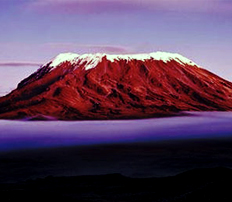
Designed by Timeless International .
- +1 (168) 314 5016
- [email protected]
- Mon - Sat 12:00 - 20:00
- English Kiswahili
places to visit
What to do in southern circuit.
Tourism in Southern Circuit of Tanzania is comprised of Morogoro, Iringa, Njombe, Ruvuma, Mbeya, Songwe, Rukwa and Katavi regions. The region has a vast endowment of tourism assets which includes National parks, reserves, cultural and historical attractions. In Southern Circuit Tourist can carry out wildlife view, photographic, walking safaris, night game drives, boat safaris and canoeing, spot fishing, mountains and hill climbing, swimming, bird watching, traditional dancing, traditional cooking, perform camp fire and more tourist activities.
WHAT TO SEE IN SOUTHERN CIRCUIT
In Southern Circuit of Tanzania, tourist can enjoy seeing several beatifuly topographical features such as mountains, hills and plateaus covered with thick forest, grasses, flowers and different wildlife species such as elephants, lions, leopards, girraffe, buffallos, hipopotamus, zebras and many others . Also, tourist can observe nice looking lakes such as like Nyasa, Tanganyika, Rukwa, Ngosi, Ngwazi and attractive rivers basins like Rufiji, Ruaha, Rukwa, Ruhuhu, Ruhuji and Kilombero to mention few. Tourists can enjoy diverse cultural activities from different tribes in Morogoro, Iringa, Njombe, Ruvuma, Mbeya, Songwe, Rukwa and Katavi regions.
WHERE TO GO IN SOUTHERN CIRCUIT
Tourist are encouraged to go in Morogoro, Iringa, Njombe, Ruvuma, Mbeya, Songwe, Rukwa and Katavi regions. In these areas will visit National Parks (Nyerere, Mikumi, Udzungwa, Ruaha, Kitulo, Katavi, Mahale), Game Reserves (with Selous and Mpanga Kipengele), two rift valley lakes (Nyasa, Tanganyika, Rukwa, Ngosi, Ngwazi) and areas of cultural interest.
IMPROVEMENT OF ROAD NETWORKS
Southern Circuit is well connected to other tourism zones through land and air transport. In recent years, through sustained programmes, there have been major developments of quality road networks from major cities to the Southern Circuit. This has helped to ensure timely travel opportunities and exploration of the South by visitors.
IMPORTANT AREA TO EXPERIENCE IN SOUTHERN CIRCUIT
Ruaha National Park is the largest national park in Tanzania second largest in Africa. It was gazetted a National Park in 1964. Mbozi meteorite is the most popular tourist attraction found in Songwe region. Weighing in at a cool 12 tons, the irregularly shaped Mbozi Meteorite – which lies on the southwestern slope of Marengi Hill, 70 kilometers west of Mbeya, off the road to Tunduma – is the world’s eighth largest known found in Songwe region. Katavi National Park is a Tanzanian national park created in 1974 and is located in Katavi Region. Lake Tanganyika is the longest Lake in Africa (720km long). It is the second deepest Lake in the world (1,470m deep) – second only to Lake Baikal in Russia. It is said to hold almost one fifth of the world’s available fresh water.
Kitulo national park having more than 300 different kinds of flowers making the park nicknamed as the garden of God or Flowers of Serengeti and different kind of plants. Udzungwa national park is found about 60km south of Mikumi along Mikumi - Ifakara road off the Dar es Salaam - Mbeya highway.
APRIL SALE: Discover and book at up to 60% off!
Southern Circuit Tanzania Tours & Trips
Find the right tour package for you through Southern Circuit Tanzania. We've got 53 trips going to Southern Circuit Tanzania, starting from just 3 days in length, and the longest tour is 15 days. The most popular month to go is June, which has the most tour departures.
Filters applied
53 southern circuit tanzania tour packages with 47 reviews.
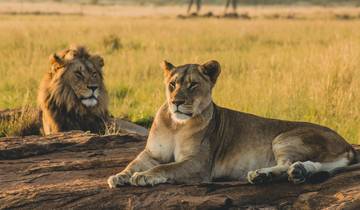
- Christmas & New Year
7 Days Selous, Mikumi & Ruaha Safari Package
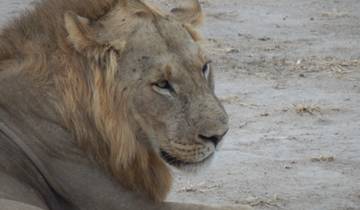
- Wildlife & Nature Photography
9 Days Jewels of Southern Tanzania Fly In Safari
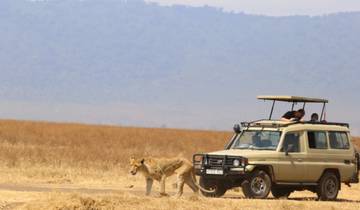
3 Days 2 Nights Mikumi Wildlife Lodge Safari
Great 3 Mikumi safari experience with Migration Venture Africa We have done self-drive safaris in many parts of Southern Africa but never visited Tanzania. We have done the big five many times and were now more interested in birds, landscape and wildlife in quiet places, not chasing after leopards with a dozen other vehicles. A knowledgeable guide was essential. We didn't need luxury but comfort was essential. We were flexible on dates within our schedule and good enough Migration Venture Africa managed to fulfill our demands. Highly recommending this agency for all your Tanzania safari adventures.
- 5% deposit on some dates Some departure dates offer you the chance to book this tour with a lower deposit.

5 Days 4 Nights Mikumi & Ruaha Wildlife Lodge Safari
My 5-day safari at the Tanzanian National Parks of Ruaha, Mikumi, and Selous was an absolute dream come true. The breathtaking landscapes, abundant wildlife, and incredible experiences surpassed all my expectations.
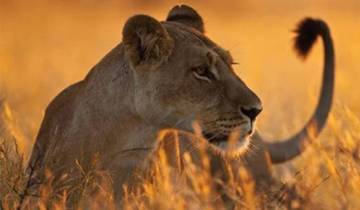
mikumi national park classic safari
Vi returnerte til Tanzania for nok en safari med Kwesa Tours. Det var et spennende eventyr å besøke parkene med Edward, som er en fenomenal guide. Snill, omsorgsfull og ekspert på å håndtere gjester. Hans hovedanliggende var å guide oss til ønskelisten vår, først var den store gnu-vandringen. Han tok seg tid til å svare på alle spørsmålene våre og lære oss så mye om Tanzania. Vi er glade for at turen vår ble et fantastisk eventyr.
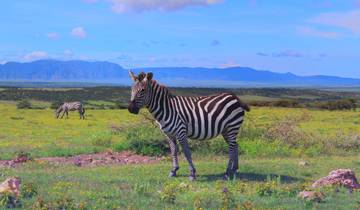
Customized Southern Tanzania Safaris, Daily Departure & Private Trip
- Book With Flexibility This operator allows you to rebook your dates or tours with them for free, waiving change fees.
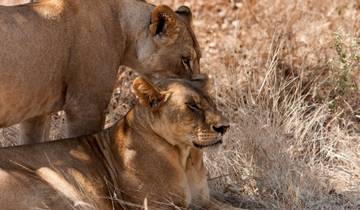
3 Days Mikumi National Park
We did 3 days visiting Serengeti, Ngorongoro and Tarangire National Park Communication was excellent - I asked lots of questions and did a ton of research myself and Ramadhani was extremely patient with me and very responsive. He was straight forward and extremely professional. Serengeti Tour itself was excellent - an incredible experience and one never to be forgotten. Everything was spot on. About Serengeti and Ngonogoro Crater our expectations were high from what we had read.
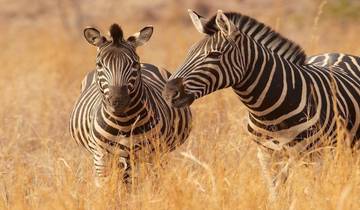
RUAHA NATIONAL PARK
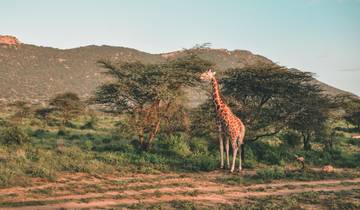
Stupendous 7 Days Mikumi, Udzungwa and Ruaha National Park Safari
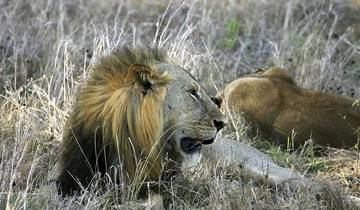
Best of mikumi national park

Ruaha national park - 3 days
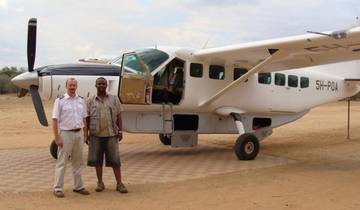
- Flying Safari
3 Days - Ruaha National Park Safari (Fly From Zanzibar Or Dar Es Salaam)
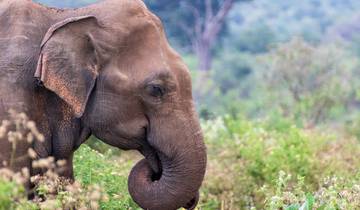
Unforgettable 4 Days Ruaha National Park Safari
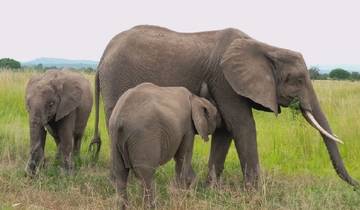
8 Days Mikumi NP, Ruaha NP and Nyerere NP (Selous GR) the best of Southern Tanzania.
- 10% deposit on some dates Some departure dates offer you the chance to book this tour with a lower deposit.
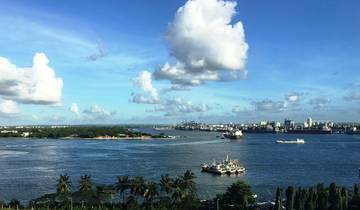
Lodge Safari to Mikumi National Park
What people love about southern circuit tanzania tours.
As a nature enthusiast, I was thrilled to witness the incredible birdlife in Ruaha, Mikumi, and Selous parks. The variety of colorful and rare bird species I encountered was a true delight for any birdwatcher.
Selous National Park left me speechless with its sheer size and remoteness. The boat safari on the Rufiji River was a highlight of my trip, where I witnessed hippos bathing and crocodiles lurking in the waters. It was a thrilling and immersive experience.
Southern Circuit Tanzania Tours starting in:
- Dar es Salaam (26)
- Mikumi National Park (6)
- Family (49)
- Safari (40)
- Personalized (37)
- Fully Guided (36)
- Private (18)
- Partially Guided (16)
- Explorer (6)
- Small Group (17)
- 3 Day Tours (16)
- 7 Day Tours (16)
- 10 Day Tours (4)
- Spring 2024 (34)
- Summer 2024 (36)
- Fall / Autumn 2024 (35)
- Winter 2024 / 2025 (35)
- Spring 2025 (20)
- Summer 2025 (17)
- Fall / Autumn 2025 (16)
- Winter 2025 / 2026 (16)
- April 2024 (34)
- May 2024 (35)
- June 2024 (36)
- July 2024 (36)
- August 2024 (35)
- September 2024 (35)
- October 2024 (35)
- November 2024 (35)
- December 2024 (35)
- January 2025 (22)
- February 2025 (20)
- March 2025 (20)
- April 2025 (17)
- May 2025 (18)
- June 2025 (17)
- July 2025 (17)
- August 2025 (17)
- September 2025 (16)
- October 2025 (16)
- November 2025 (16)
Other Regions in Tanzania
- Northern Circuit Tanzania (1673)
- Mount Kilimanjaro (696)
- Tarangire National Park (150)
- Serengeti National Park (133)
- Ngorongoro National Park (117)
- Zanzibar (89)
- Mount Meru (81)
- Mikumi National Park (37)
- Selous Game Reserve (35)
- Ruaha National Park (11)
- Western Tanzania (5)
Travel Styles
- Singles and Solo (28)
- Seniors (8)

Tanzania Safari Circuits Explained: North, South, West, Coast
by Erika Atienza | 0 comments
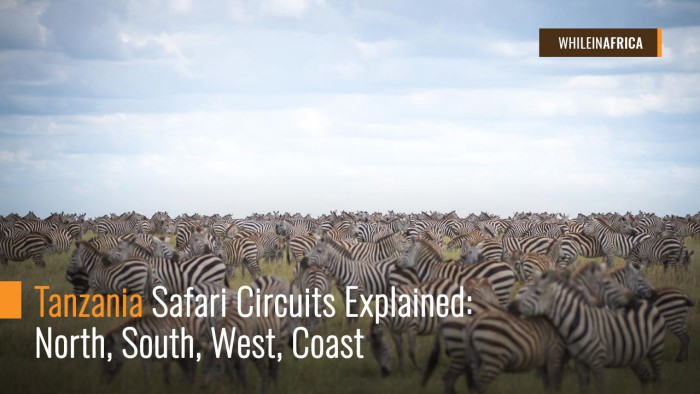
Tanzania has so much to offer! To make it easier to plan your trip, Tanzania has been divided into regional circuits – all offering breathtaking landscapes, intriguing wildlife and a plethora of exciting safari activities! The two main Tanzania safari circuits are northern and southern, but to give you a comprehensive guide, we will also cover the western safari circuit as well as the coastal circuit!
Northern Safari Circuit | Southern Safari Circuit | Western Safari Circuit | Coastal Circuit
“ If you are to do only one safari in your life, the northern safari circuit would be your perfect destination. It also has a strong National Geographic feels 🙂
But, if you would like to veer away from the crowds and enjoy a massive wilderness almost all to yourself, then the southern safari circuits may be your best bet. To say hello to the primates, go to the western circuit. Of course, if you want to spend time in a tropical paradise, the coastal circuit of Tanzania will always amaze you.
NORTHERN SAFARI CIRCUIT
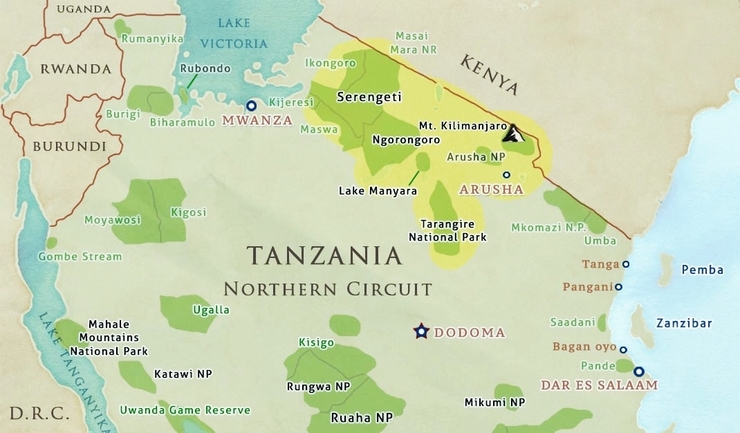
Northern safari circuit encompasses some of Africa’s most iconic parks and reserves including Serengeti National Park, Ngorongoro Conservation Area, Tarangire National Park, Lake Manyara National Park, Kilimanjaro National Park, Arusha National Park, and the Great Rift Valley lakes Natron and Eyasi. Due to the popularity of these parks, the northern safari circuit harbors more tourists than any other circuit in Tanzania. Sometimes, especially during peak seasons, it is not uncommon to see plenty of vehicles in one area.
Main Gateway
The main gateway to this circuit is the city of Arusha, which is served by Kilimanjaro International Airport. Unfortunately, not a lot of direct flights to Kilimanjaro are available. Tourists coming from UK, US, Europe, Middle East, and Asia usually fly directly into JRO from Amsterdam via KLM Royal Dutch Airlines. Other options are connecting flights via Nairobi in Kenya, Addis Ababa in Ethiopia or Dar es Salaam.
What’s great about it?
The great thing about the northern safari circuit is, parks are accessible by roads and so it’s easy to drive from one park to another. Since visitors usually spend a lot of time on the road during their game drives and some roads can be dusty or muddy, closed vehicles with pop-up roofs are typically used in this area. The pop-up roofs and large windows allow excellent game viewing while maintaining safety and comfort throughout the trip.
The world-famous Big Five is also a common sighting all year-round, and a lot of accommodation options ranging from budget camps to luxury lodges and exclusive tented camps are widely offered. Also, adventurous travelers who aim to take their once-in-a-lifetime trip to greater heights can easily trek the world-famous Mount Kilimanjaro or the crater of Mount Meru.
Top Northern Safari Parks:
- Serengeti National Park
Home to Great Wildebeest Migration which has been consistently named “the greatest show on earth” and the World Cup of Wildlife, Serengeti National Park is one of the major attractions in Tanzania . It displays the breathtaking scenery of a wildlife-ridden Africa all year-round and visitors never go zero when it comes to game viewing.
- Ngorongoro Conservation Area
Ngorongoro Conservation Area, Africa’s Garden of Eden, is where you can find the famous Ngorongoro Crater, the world’s largest unbroken, inactive volcanic caldera. It is another UNESCO World Heritage Site that promises sightings of the Big Five and all other wildlife including about 25,000 large mammals. The crater rim sits around 7,500m above sea level and is covered in ancient forests draped in lichen, making it a unique site to spot such incredible diversity and concentration of animals and birds.
- Lake Manyara National Park
Imagine a vast soda lake filled with massive herds of vibrant pink flamingoes, white rhinos, zebras and other wildlife? In Lake Manyara National Park, you get to see this before your very eyes. Aside from such a sight to behold, the main attractions in this park include the tree-climbing lions and the prolific elephant population.
Best time to visit Northern Circuit Parks: June to October and December to March
SOUTHERN SAFARI CIRCUIT
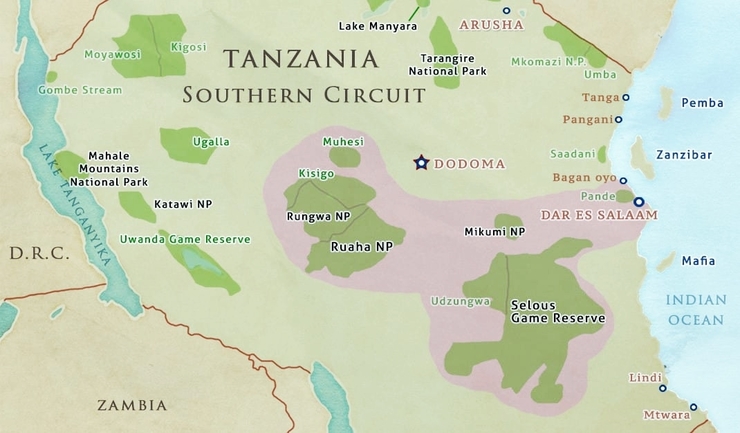
For those who want to get away from the crowds and experience a remote safari adventure, the southern safari circuit would sound perfect for that. The parks in this region are enormous, untouched, remote and teeming with a spectacular diversity of wildlife. The parks included in the southern safari circuit are Selous Game Reserve, Ruaha National Park, Mikumi National Park, and Udzungwa Mountains National Park. Although the Big Five isn’t complete here and cannot be found all in one area, a lot of other animals like roan antelopes, sable antelopes, black rhinos and cheetahs can be easily spotted. Also, this is where you can find the world’s thickest population of the last remaining African wild dogs.
To get to the southern safari circuit, the main entry hub is Dar es Salaam, a major city and commercial port in Tanzania. Tourists often fly to Julius Nyerere International Airport (DAR) and then take a light aircraft to one of the parks. The good news is, a myriad of airlines fly directly to DAR from many parts of the world, including the US, UK, Europe, the Middle East, Asia, and Australia. However, since southern circuit parks are not accessible by road, travelers also need to take into account that they need to book a domestic flight into the parks as well.
For game viewing, open-sided vehicles are available. This enhances the game viewing experience as it offers 360-degree views of the virgin landscape and exciting game. Also, the proximity of the southern circuit to the coastal circuit makes it a perfect bush and beach vacation – sort of like an adventure in the true wild side of Africa and then a relaxing tropical getaway.
What makes the southern safari circuit even more appealing is that they offer activities that are not available in the more popular northern circuit. For example, guided walking tours, fly-camping, and boating cannot be experienced in the north. On top of that, you get to enjoy a wealth of wildlife and untouched landscape virtually all to yourself.
Top Southern Safari Parks:
- Selous Game Reserve
Selous is one of the largest game reserves in the world. It is widely popular for being the home to the world’s largest population of wild dogs as well as some of the country’s last remaining black rhinos. Considered a hidden gem of Africa, Selous boasts of a variety of vegetation zones, ranging from dense thickets to riverine forests and swamps to open wooded grasslands.
- Ruaha National Park
Covering 20,226 square kilometers (7,809 sq mi) of savannah, Ruaha National Park is Tanzania’s and East Africa’s largest park. It hosts 10% of the planet’s lion population as well as one of the largest elephant populations anywhere. The park can be reached by car on a dirt road from Iringa or by light aircraft in Dar es Salaam. If you drive from the town of Iringa, you will reach the park in 2 hours whereas if you drive from Dar, it will be an approximately 10-hour journey all in all. Via plane, it will be about 2.5 hours through either Msembe airstrip or Jongomeru airstrip.
- Mikumi National Park
Mikumi National Park is the fourth largest park in the entire country. Since its road improvements connecting Dar es Salaam, Mikumi has become a hotspot for Tanzania tourism. Elephants, wildebeest, zebras, and buffaloes along with other mammals are abundant in this park. Although occasional, you can also spot lions potentially preying on other animals, giraffes browsing on the leaves of the acacia trees, and hippos resting on the Mkata River.
Best time to visit Southern Circuit Parks: June to October
WESTERN SAFARI CIRCUIT
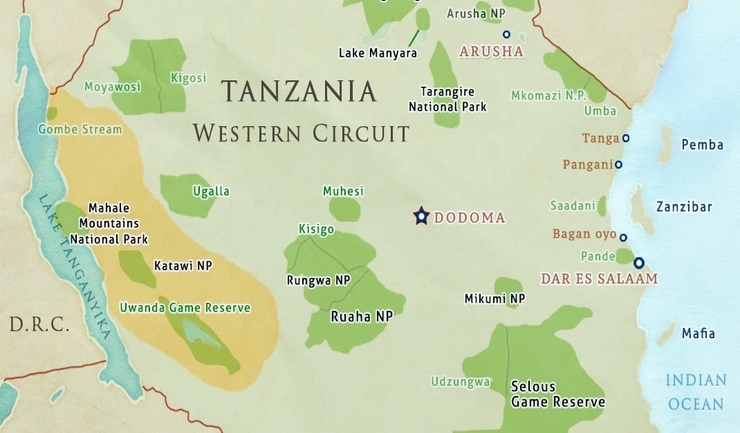
Western safari circuit is where you get to explore the intriguing jungles of Tanzania to meet chimpanzees. But, it’s not all about the primates. Here, you can also find rare roan and sable antelope species as well as hippos, giraffes and if you’re lucky, you can spot elephants, leopards, zebras and maybe even a lion, too!
Western safari circuit comprises of Mahale Mountains National Park, Katavi National Park, and Gombe Stream National Park. Although not the primary reason for visiting Tanzania, the western circuit promises a different kind of adventure and an exciting side trip to any wildlife safari. Since this area is very remote, the only way to get here is via light aircraft or boat. Flights may start from Arusha, Dar es Salaam or even Zanzibar.
Depending on your itinerary, the main entry hubs into the western safari circuit are Tanzania’s major international hubs: Kilimanjaro International Airport (JRO) in Arusha or Julius Nyerere International Airport (DAR) in Dar es Salaam. Most attractions are only accessible by either charter planes or a boat ride from Kigoma town.
To get to Kigoma, the most accessible starting point is Dar es Salaam. If you come from Arusha, you have to travel to Dar and then from Dar, you can take the bus or train to Kigoma. You can also start from Dodomo (or travel from Arusha to Dodomo) and then take a bus or train to Kigoma. However, if you’re looking into visiting Katavi National Park first, it is most accessible through Arusha as plenty of flights are available from there via Safari Air Link and Nomad Safaris.
Western Circuit parks are not very popular with tourists as they usually go with Northern Circuit Safari Parks almost like a reflex. But, what’s great about this circuit is that it offers something different than the “usual” – it’s the road less traveled. It features a deep virgin territory, primate safari experiences like chimpanzee trekking and, given that most of it is probably one of the most inaccessible areas in the country, it displays an unspoiled wilderness that’s just too captivating not to stare at.
Top Western Circuit Parks:
- Mahale Mountains National Park
The popular primates destination in Tanzania, Mahale Mountains National Park hosts about 800 chimpanzees, one of Africa’s big apes. It offers guided treks to the forest and gives you a chance to meet and greet the chimps. The park also supports other primates including red colobus monkeys, red-tailed and blue monkeys.
- Katavi National Park
Katavi National Park is a very remote park, less frequented by tourists. It covers Katuma River as well as Lakes Katavi and Chada. Among the many animals that roam this park are antelopes, buffaloes, zebras, wildebeest, giraffes, cheetahs, leopards, lions, and hyenas.
- Gombe Stream National Park
With only 13.5 square miles (35 km 2 ) of protected land along the hills of the eastern shore of Lake Tanganyika, Gombe Stream National Park is one of Tanzania’s smallest parks. However small, the park is a world-famous chimp reserve that hosts plenty of habituated endangered chimpanzees along with numerous of baboons.
Best time to visit Western Circuit Parks: June to October (Mahale), February to June (Gombe), December to April (Katavi)
COASTAL CIRCUIT
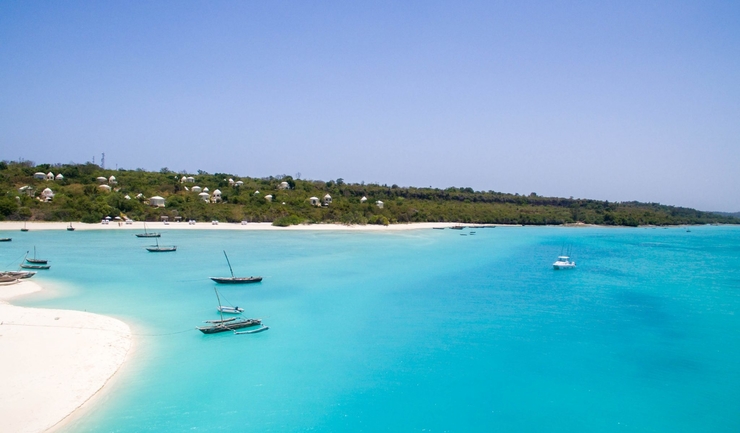
Tanzania is not all about wildlife. There is also a slice of tropical paradise on this side of the world. In the coastal lands and towns of Zanzibar, Pemba, and Mafia, you can find some of the world’s most beautiful beaches, most extravagant diving spots and fantastic historical experiences.
Zanzibar is the most popular beach and honeymoon destination in Tanzania. It features clear, turquoise-blue water, shallow sandbars, and many small islands. Aside from the gorgeous stretches of white sand beaches and the many diving and fishing spots, Zanzibar also houses many historical and cultural areas including the UNESCO World Heritage Site, Stone Town. You can easily revel in the beauty of this island from other parts of Africa and even other parts of the world. It has an international airport that receives numerous flights via Condor, Ethiopian Airways, Kenyan Airways, KLM, Qatar Airways, Jetfly and many more.
If you come from southern safari circuits, you can easily reach Zanzibar since it’s very near to Dar es Salaam. If you come from northern safari circuits, you can either go to Dar es Salaam and catch a flight to Zanzibar from there or you can drive or take a bus to Dar es Salaam and then take a ferry to Zanzibar.
Do you know that some of the best beaches in the world are within this beautiful coastal stretch? Not only will you be able to relax and bask under the sun in gorgeous palm-fringed white sand beaches or dive into a world-class coral wilderness, but you also get to explore the historic and cultural side of Tanzania. You can find quaint shops, bazaars, interesting architecture, caves, museums, and excellent snorkeling and fishing spots as well.
Northern vs Southern Safari Circuits
Since western and coastal circuits are distinct from the two and people usually get caught in between northern and southern safari circuits for their wildlife adventure, here’s a nutshell of the pros and cons to the northern and southern safari circuits.
A once-in-a-lifetime adventure nonetheless.
Whichever part of Tanzania you decide to explore on your next trip, you will surely gain a memorable adventure – one that’ll haunt your travel desires for a long time. Whether you opt for the remote and exclusive southern safari parks , the famous, unparalleled sightings in the northern safari parks, the exciting primate visit to the western circuit or the rejuvenating tropical getaway in the coastal circuit, there is no doubt that you will fall in love with Tanzania immediately! Besides, you can always combine them and have the African adventure of a lifetime.
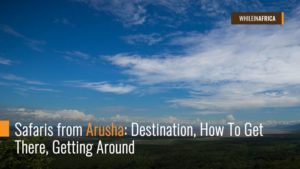
Related Articles
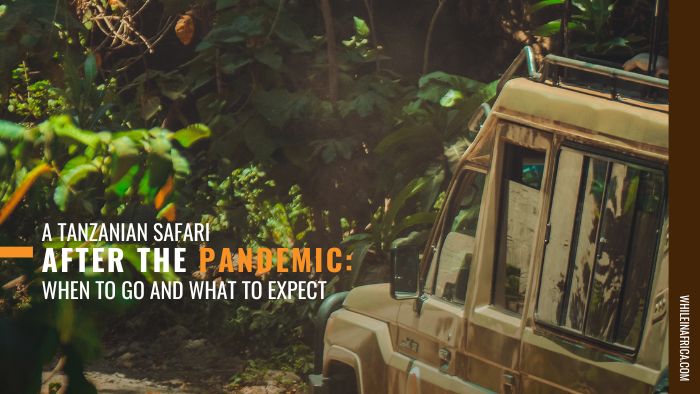
- A Tanzanian safari after the pandemic: When to go and what to expect
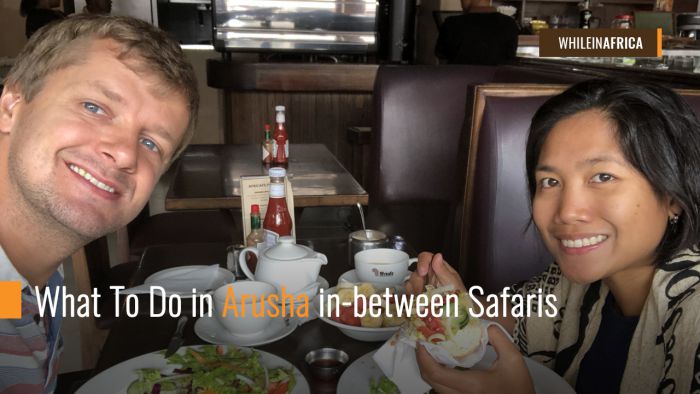
- What To Do in Arusha in-between Safaris
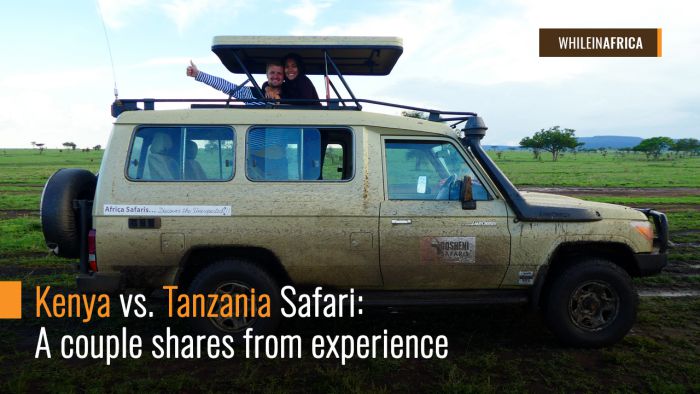
Kenya vs. Tanzania Safari: A Couple Shares From Experience
Submit a comment cancel reply.
Your email address will not be published. Required fields are marked *

We are Erika and Martin from the Philippines and Denmark traveling through Africa. We like to explore new sights, live local, and show the Real Africa. Keep reading.
Latest Articles
- Day Tour Visiting Places Near Dakhla
- Crossing Borders Dakhla to Mauritania
- Before Your Trip
About Africa Crossing Borders Experiences Filipino Corner Plan A Trip Sustainable Travels Visa Guide

- The Founders
- Why Choose Adumu?
- Social Impact
- Maasai Empowerment
- Social Impact Partners
- Theory of Change
- Responsible Tourism
- Last-Minute Specials
- Tanzania, Northern Circuit
- Tanzania, Southern Circuit
- Tanzania, Western Circuit
- Kilimanjaro
- Gorilla Trekking in Uganda and Rwanda
- Zanzibar and the Coast
- Game Drives
- Primate Treks
- Visit Maasailand
- Trekking and Walking Safaris
- Photo Safaris
- Biking Safaris
- Cultural Performances
- Culinary Tours
- Coffee Tours
- Community Based Cultural Tours
- Massage and Spa
- Scuba and Snorkeling
- Dhow Safaris
- Hunting with the Hadzabe
- History Tours and Museums
- Tree Planting
- Balloon Safaris
- Honeymoon Safaris
- Family Safaris
- Accommodations
- Classic Safaris
- Learning Journeys
- Active Safaris
- Voluntourism and Give Back Trips
- Faith and Spirituality Retreats
- Alumni Travel
- Corporate Trips
- Singles Group Safaris
- Start Planning Your Trip

5 Days From 2,743 USD

10 Days From 5,367 USD

8 Days From 7,686 USD

8 Days From 7,390 USD

14 Days From 7,729 USD

Southern Circuit
The lesser-trodden Southern Circuit includes the Selous Game Reserve , the Udzungwa Mountains, Mikumi, and Ruaha National Parks , Saadani National Park, Mnazi Bay-Ruvuma Estuary Marine Park, and Kitulu National Park.
Udzungwa Mountains, Mikumi, and Ruaha

Udzungwa National Park is a lush high-elevation rain forest and a great site for walking and moderate hiking. It is one of thirty-four “World Biodiversity Hotspots” and one of 200 World Wildlife Federation ecoregions of global critical importance. The Udzungwa forest is part of the so-called Eastern Arc, which is a series of mountains ranging from the Southern Highlands through the Uluguru and Usambara mountains northwards to Pare. The forest is home to many indigenous species of plants, mammals, reptiles, amphibians, birds, butterflies, and insects of which some of species are found nowhere else in the world. Udzungwa is also a unique cultural site for containing caves that have been used in the spiritual traditons and rituals of nearby tribes over many years—these have remained preserved so that one can get a sense of ancient religious traditions upon visiting.
Ruaha National Park , located in the middle of Tanzania about 130 km from Iringa, is the second largest park in Tanzania, covering an area of more than 13,000 km 2 . The main vegetation types in Ruaha are Miombo woodland, acacia grasslands, and large baobab trees, all which attract diverse number of animals species. Some of the major attractions include large populations of elephants, giraffes, impalas, buffalo, lions, leopards, and hunting dogs. The Great Ruaha River that borders the park in the east, provides habitation for hippopotamus and crocodiles. Ruaha is also a prime destination for birdwatchers, with 436 species that have been identified so far.
Mikumi National Park is bordered to the south by Selous Game Reserve, the two areas forming a unique ecosystem. The vegetation of this area consists of savannah dotted with acacia, baobab, tamarinds, and some rare palm. Mikumi was named a National Park in 1967 and currently has an approximate size of 3,230 km 2 . Mikumi offers a unique wildlife experience with a large number of herbivores (buffaloes, giraffes, elephants and zebra) and a rich variety of bird species (more than 400) identified. On the hunt for all the herbivores, you will find large crocodiles, and of course lions and leopards.
Selous Game Reserve

Selous Game Reserve is the largest fauna reserve in the world, spanning over 55,000 km², almost four times the size of the Serengeti. Selous is considered important enough to be a World Heritage Site in which the lucky few can experience a safari in absolutely wild and unspoiled bush. The reserve was named after Englishman Sir Frederick Selous, a famous big game hunter and early conservationist, whose adventure books on Africa became best sellers in Victorian England. Among its unique attractions, the reserve contains one third of all the African hunting dog population in the world. Witness the majesty of large migrations of elephants, get close up with all the Big Five, and even enjoy game fishing while you are here.
Join Adumu Safaris founder on our Epic Tanzania & Zanzibar Learning Journey THIS JULY
We place cookies on your device to give you the best user experience. By using our website, you agree to the placement of these cookies. To learn more read our privacy notice.
Privacy Preference Center
Privacy preferences.
When you visit any website, it may store or retrieve information through your browser, usually in the form of cookies. Since we respect your right to privacy, you can choose not to permit data collection from certain types of services. However, not allowing these services may impact your experience.
Privacy Policy

- Ready-made safaris
- Experiences
- Special offers
- Accommodation
- Start planning
- Booking terms
- When to go on safari - month by month
- East or Southern Africa safari?
- Solo travellers
- Women on safari
- Accommodation types & luxury levels
- General tips & advice
- All stories
- Afrika Odyssey Expedition
- Photographer of the Year
- Read on our app
- 2024 entries
- 2024 details
- 2024 prizes
- 2024 entry form
- 2023 winners
- Collar a lion
- Save a pangolin
- Rules of engagement
- Job vacancies
- Ukuri - safari camps

The ultimate African safari

Thursday, 30 November 2023

Tanzania is an extraordinary country, replete with an abundance of mesmerising natural marvels and magnificent cultural nuances. It is an essential bucket-list destination for safari enthusiasts and wildlife lovers. Of course, in an ideal world, these visitors would have boundless time and money to explore the country at leisure, but this is not a realistic option for most. For many, a trip across the world to visit Tanzania’s majesty may be a once-in-a-lifetime experience. Tanzania is traditionally divided into “safari circuits” to ensure that travellers make the most of their special journey.
These circuits divide Tanzania into the four corners of the compass and consist of an itinerary of destinations designed to minimise travelling time and maximise the experience. Tanzania is a diverse country, so each circuit offers its own unique magic, divergent scenery, and appealing wildlife encounters. The northern, southern, western, and eastern circuits encompass a selection of national parks, reserves, conservation areas and even, in the case of the eastern circuit, islands and beaches, that visitors can choose based on their interests.
Tanzania’s northern circuit
The northern circuit is unequivocally the most popular circuit on this list and includes destinations that are the stuff of safari, travel and film-making legend. For first-time visitors who only plan to visit Tanzania, this is almost unfailingly the place to start. It involves some of the best roads in Tanzania, so every destination is easily and (relatively) quickly accessible, and there are countless accommodation options available for every budget, from basic campsites to some of the most luxurious lodges in Africa.

The northern circuit stretches from Lake Victoria in the west to Mount Kilimanjaro in the east, and it is bounded by the Kenyan border to the north and Tarangire National Park to the south. It includes such iconic names as the Serengeti and Ngorongoro, and, naturally, more time should be devoted to exploring these areas than others.
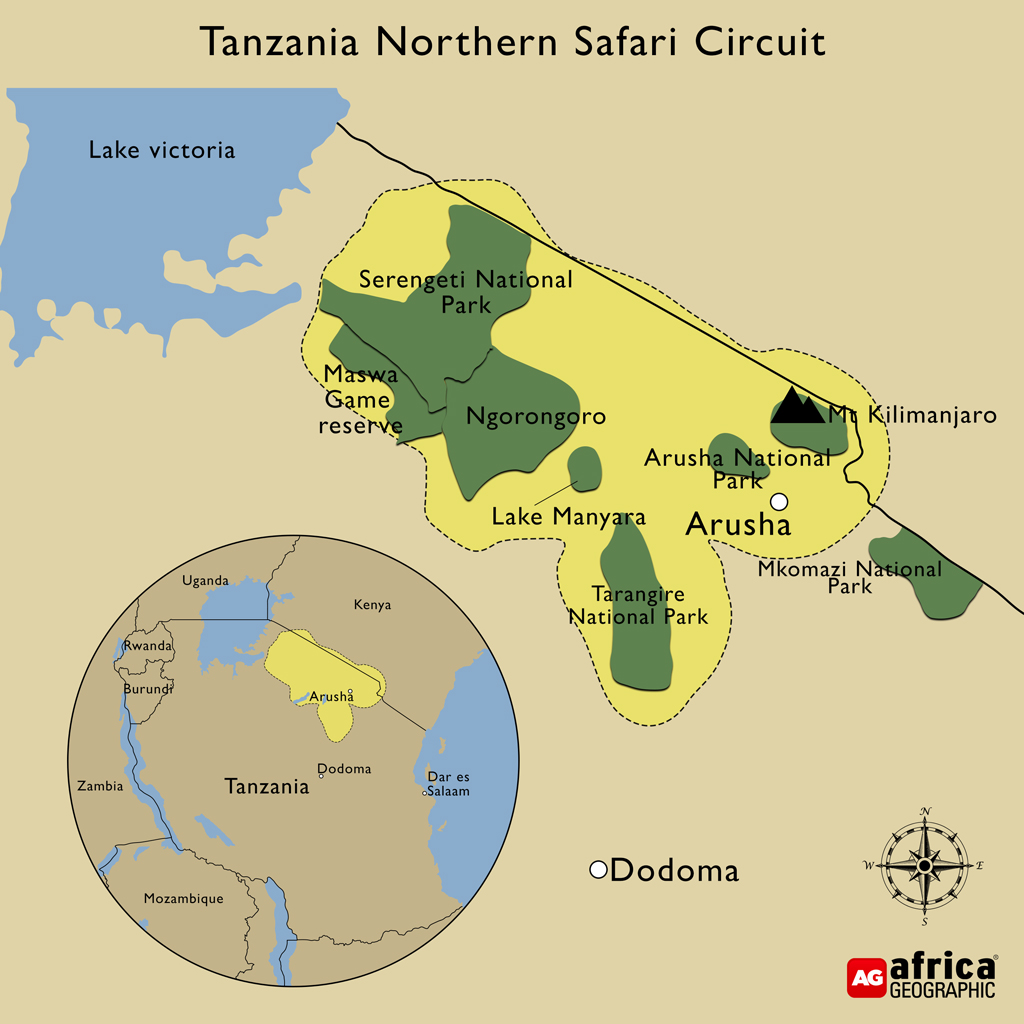
Serengeti National Park
Serengeti National Park is a land synonymous with the very essence of an African safari, where the majesty of the scenery and expansive atmosphere is matched by extraordinary wildlife viewing. Here, sweeping grass plains, rocky outcrops and woodlands support myriad animal species, all engaged in a primordial battle for survival.
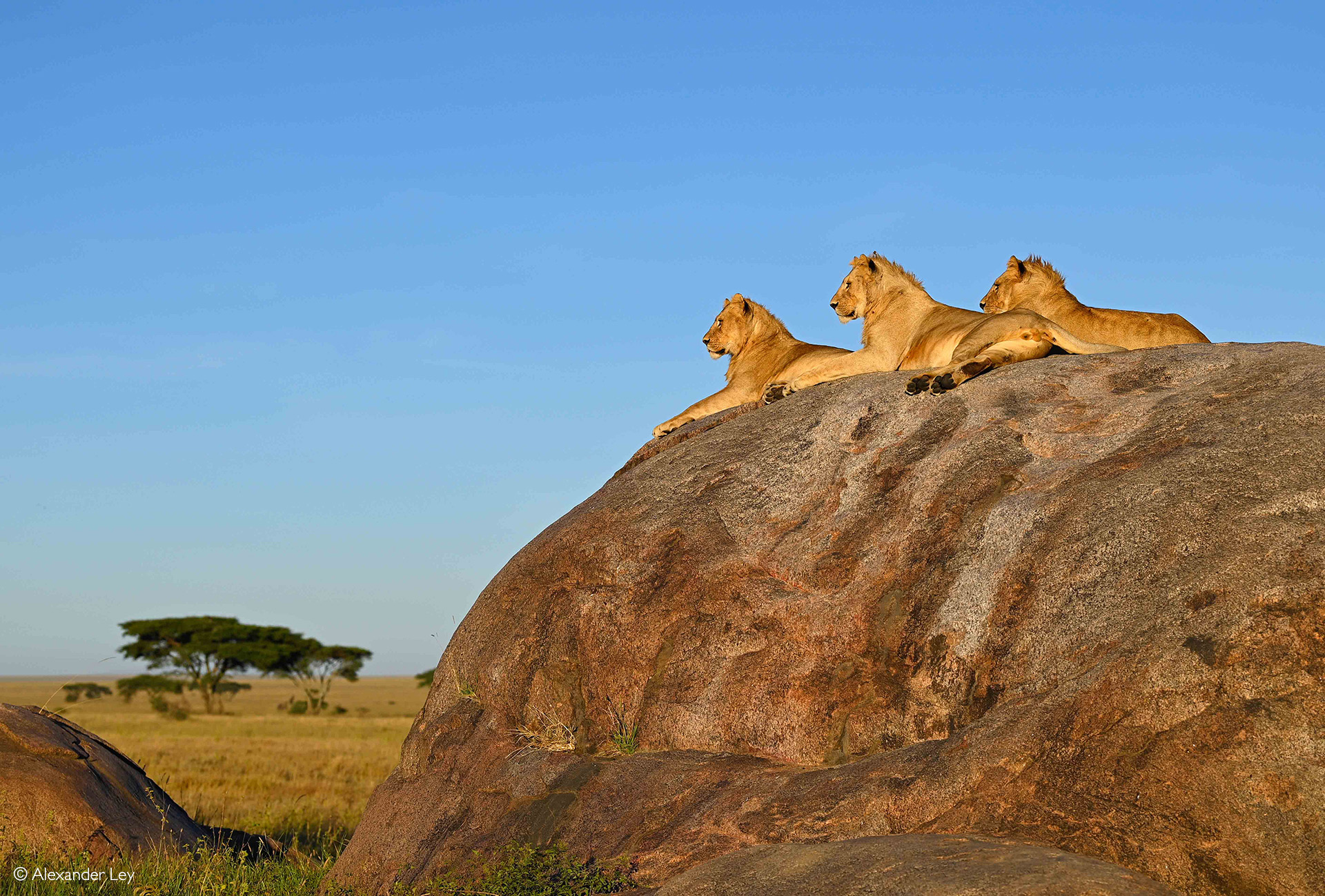
Naturally, the Serengeti ecosystem is most famous for its role in the Great Migration – the largest overland migration on earth. In fact, most of the year, the wildebeest herds move through the Serengeti before passing the international boundary into the Maasai Mara. No words can fully capture the dazzling feeling of sitting in amongst hundreds of thousands of animals that stretch as far as the eye can see or throw themselves helter-skelter at the mercy of the river crossings. However spectacular though it may be, the Serengeti is about more than the migration. The Big 5 are all present, and encounters with big cats and hyenas are all but guaranteed, viewed against the backdrop of breathtaking scenery.
The Serengeti ecosystem also incorporates several surrounding reserves and game control areas, all contiguous with the national park. These include Grumeti Controlled Area, Ikorongo Controlled Area, Loliondo Game Controlled Area and Maswa Game Reserve. The national park is also open to the Ngorongoro Conservation Area described below.
Ngorongoro Conservation Area
Ngorongoro Conservation Area is often described as Africa’s Eden, with its most prominent feature being the Ngorongoro Crater. This ancient volcanic caldera encircles one of the most biodiverse and precious wild spaces in Africa, giving the impression that time stood still at the centre of the massive geological cradle. Here, many of Africa’s most iconic animals (including the Big 5) thrive, and every year, Lake Magadi flushes pink as hundreds of flamingos arrive during the breeding season.

Outside the crater, the Ndutu region of Ngorongoro serves as a critical resting point in the Great Migration, as over a million wildebeest arrive on the short grass plains to calve. At the height of the chaos, over 8,000 calves are born each day, forced to find their feet quickly or be lost to the predators that throw themselves into the wildebeest melee with joyous abandon.
The steep-sided ravine of Olduvai (or, more correctly, Oldupai) Gorge is another of Ngorongoro’s significant attractions, having yielded a timeline of our evolution as a species. The scattered fossils, tools and bone fragments reveal the gradual development of societies and social complexities that today define Homo sapiens .
Lake Manyara National Park
Lake Manyara National Park is named for the eponymous lake along its eastern edge, with the remainder of the park sandwiched between the lake and the dramatic hills of the Great Rift escarpment to the west. Known for its spectacular displays of flamingos and other water birds, Manyara is lowkey and less frenetic than the extravaganza of Serengeti or Ngorongoro. This makes it ideal as a perfect launchpad for exploring the northern circuit of Tanzania.

Tarangire National Park
Not far from Lake Manyara, Tarangire National Park is the southernmost park in the northern circuit. It is a land of giant baobabs, fever tree forests, shimmering swamps and sweeping vistas – unequivocally one of Africa’s most underrated African safari destinations, bursting with abundant wildlife. It is also an essential landscape for one of the lesser-known migrations in Tanzania because, during the dry season, the Tarangire River becomes one of the only available water sources. Tens of thousands of animals are drawn to its banks and floodplains from miles in every direction.

Mount Kilimanjaro
As Africa’s highest mountain, Mount Kilimanjaro needs little by way of introduction, as every year, thousands of amateur and expert hikers set out to summit its peak. Its snow-capped summit stands out incongruously against the flat Rift Valley scenery below, and even those reluctant to don hiking boots should be content to gaze upon this African legend from its base.
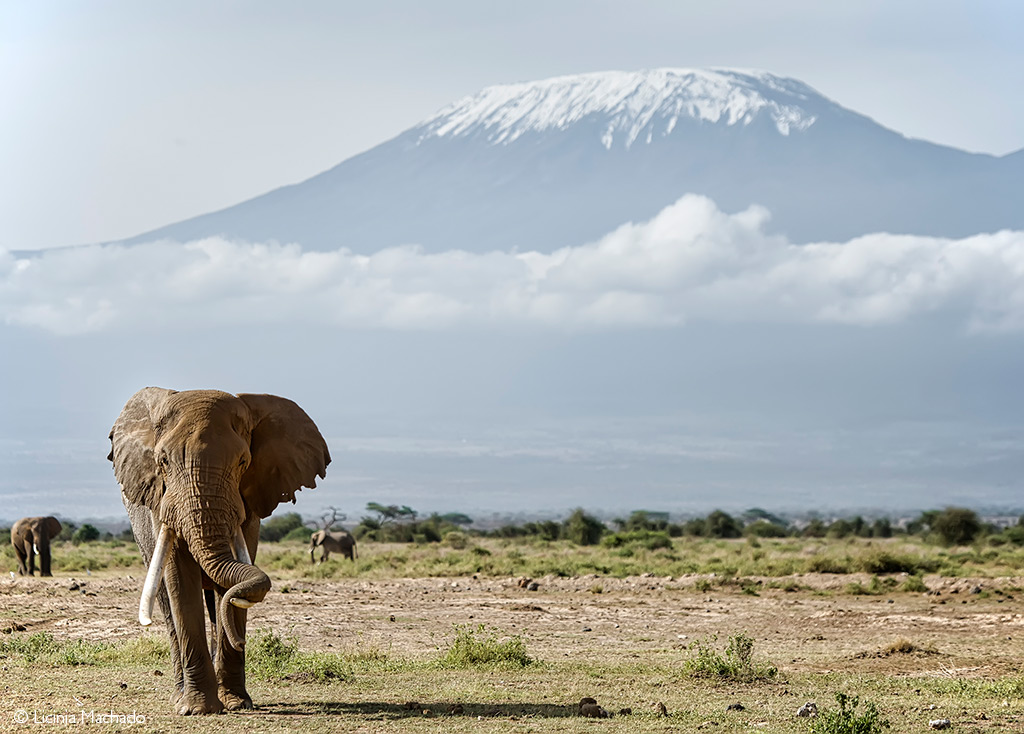
Arusha National Park and Mount Meru
The city of Arusha acts as the gateway to the northern circuit, meaning that Arusha National Park is usually the first or the last stop for travellers navigating the route. Within the park, the dormant volcano of Mount Meru is occasionally referred to as the “little brother” of Mount Kilimanjaro. It offers a much quieter and more intimate experience, along with spectacular wildlife encounters en route to the summit.

Tanzania’s s outhern circuit
In contrast to the bustling northern circuit, Tanzania’s southern safari circuit is remote and wild, characterised by a feeling of absolute immersion without ever skimping on East Africa’s famous hospitality standards. This region is famed for its back-to-basics and authentic approach, where exploring on foot is an essential part of the experience and you can go for days without encountering another tourist. Much of this region is relatively arid compared to the luscious plains of the north but still incorporates areas with thriving swamps, verdant forests and spectacular waterfalls.
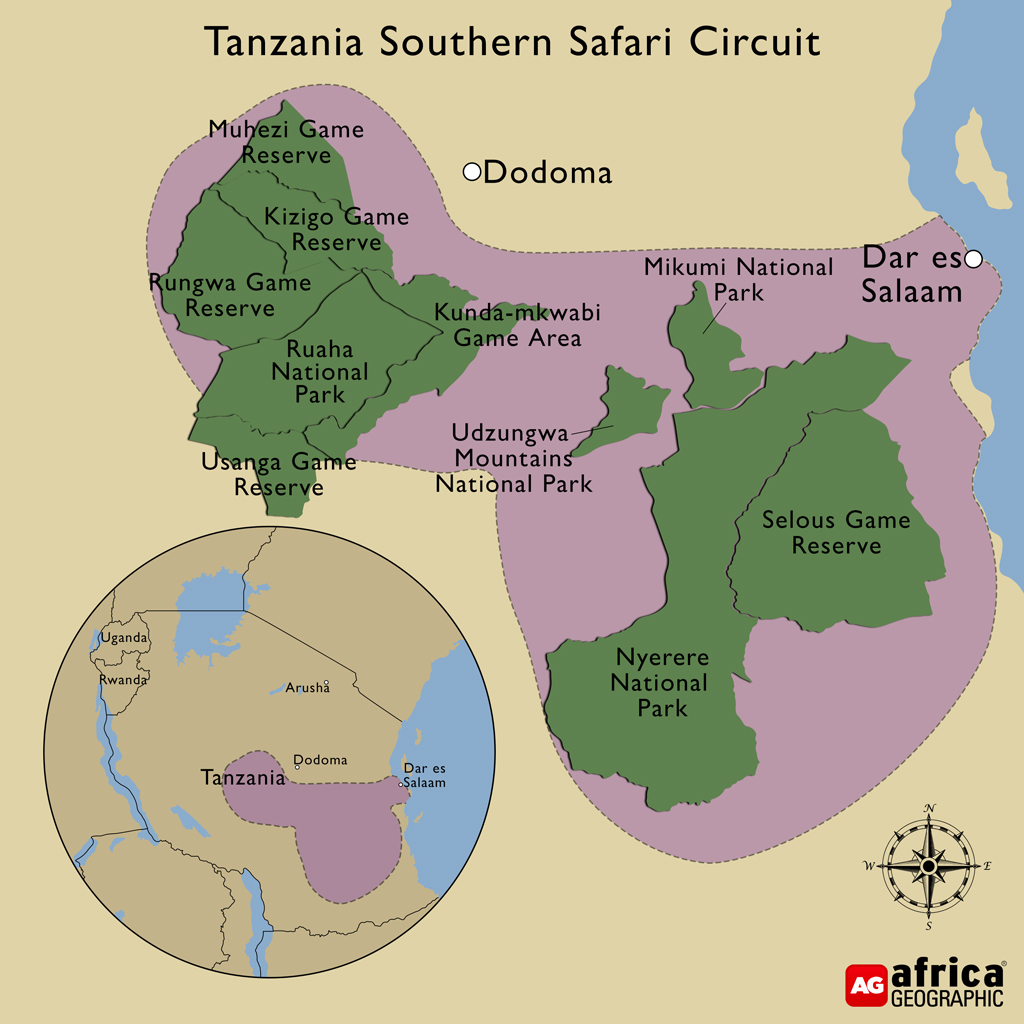
Ruaha National Park
Ruaha National Park is a gem of the southern circuit, an enormous and untamed semi-arid wilderness, divided by live-giving river systems and dotted with the pyknic forms of ancient baobabs. The rugged park supports high densities of herbivores (including sizeable herds of elephants) and one of the largest lion populations on the continent. Leopard, cheetah, spotted hyena and African wild dog (painted wolf) sightings are frequent, and some lucky visitors have even managed to spot one of the park’s elusive striped hyenas.
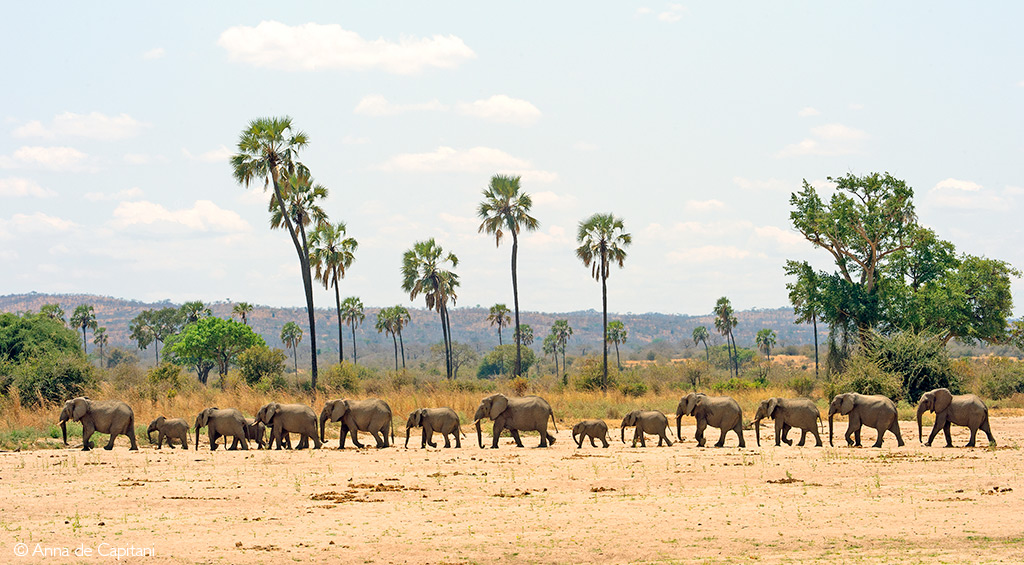
The protection of the greater Ruaha ecosystem is extended by the contiguous Rungwa, Kizigo, Usangu and Muhezi game reserves, all offering their own African safari experiences.
Nyerere National Park/Selous Game Reserve
The newly declared Nyerere National Park now extends over three sides of the Rufiji River valley, carved from the former Selous Game Reserve. The Rufiji River dominates the landscape, fanning into an intricate network of channels, oxbow lakes, and swamps, supplying a never-ending parade of thirsty animals drawn to the water’s edge. Though the declaration of the national park is intended to boost Nyerere’s tourism potential, there is no question that this remains something of a forgotten corner of Africa, where wildlife connoisseurs can lose themselves in the vast wilderness.

Mikumi National Park
Mikumi National Park lies adjacent to the northern border of Nyerere National Park and is easily accessible from Dar Es Salaam, making it a popular choice for local tourists. However, few international guests have yet to discover the splendour of Mikume’s expansive floodplains and prolific animal sightings.
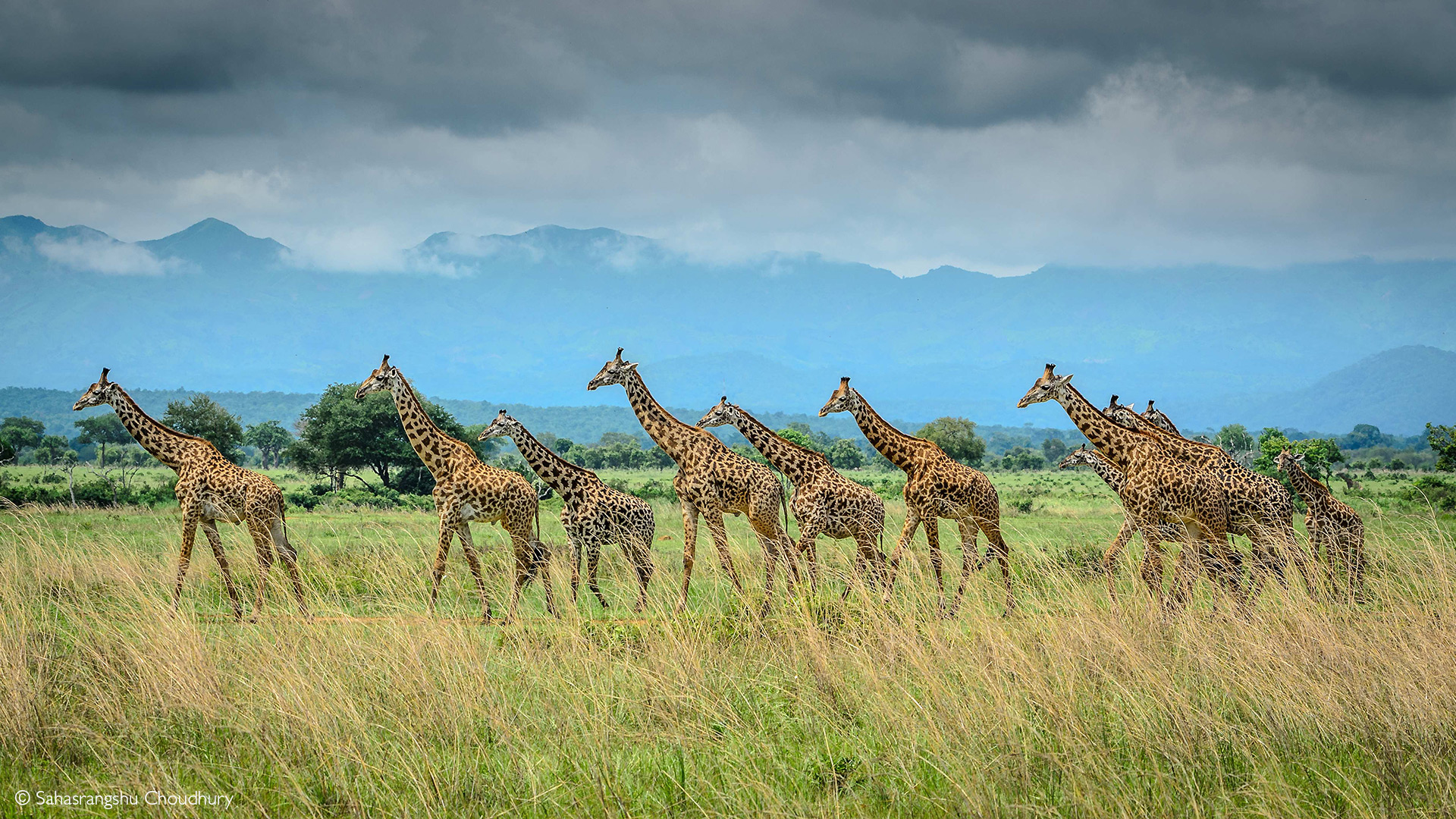
Udzungwa Mountains National Park
Despite its proximity to the western edge of Nyerere National Park, the misty forests and picturesque, tumbling waterfalls of Udzungwa Mountains National Park make it seem worlds apart. These mountains are a biodiversity hotspot characterised by mind-boggling levels of endemism, with species including the Iringa red colobus, the Sanje crested mangabey, the Udzungwa partridge and the rufous-winged sunbird.

Tanzania’s w estern circuit
Unlike the northern and southern safari circuits, Tanzania’s western circuit breaks away somewhat from the more traditional safari fare. This is a shorter and more specialised circuit and should be combined with aspects from the northern or southern circuit if time and resources allow.
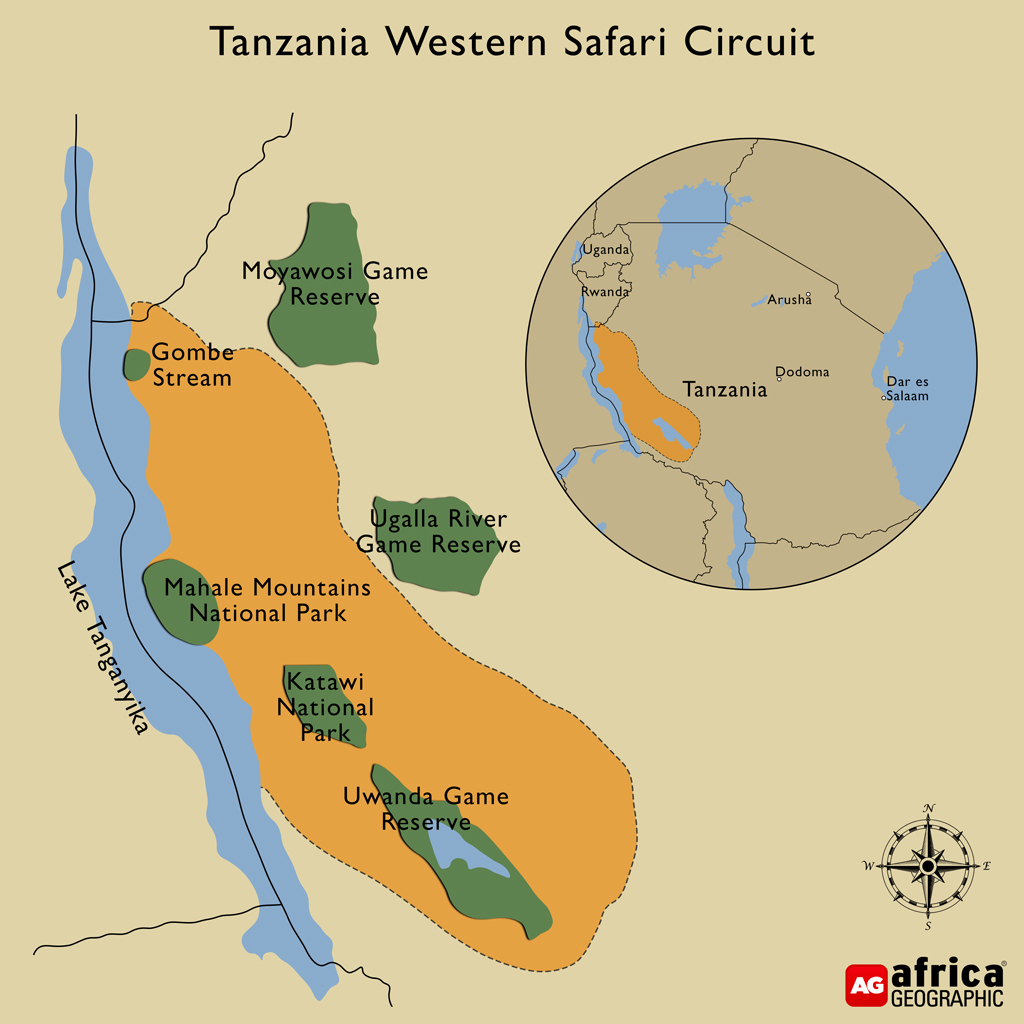
Gombe Stream National Park
Situated on the northeastern shores of Lake Tanganyika, the tiny Gombe Stream National Park is one of only a few places in Tanzania where chimpanzees can be encountered in the wild. This intimate park sports exceptional biodiversity and is celebrated as the park where Jane Goodall first set up her now-famous research centre. Here, visitors can follow expert guides into the heart of the forest in search of our chimpanzee kin, admiring the many other primate species along the way.
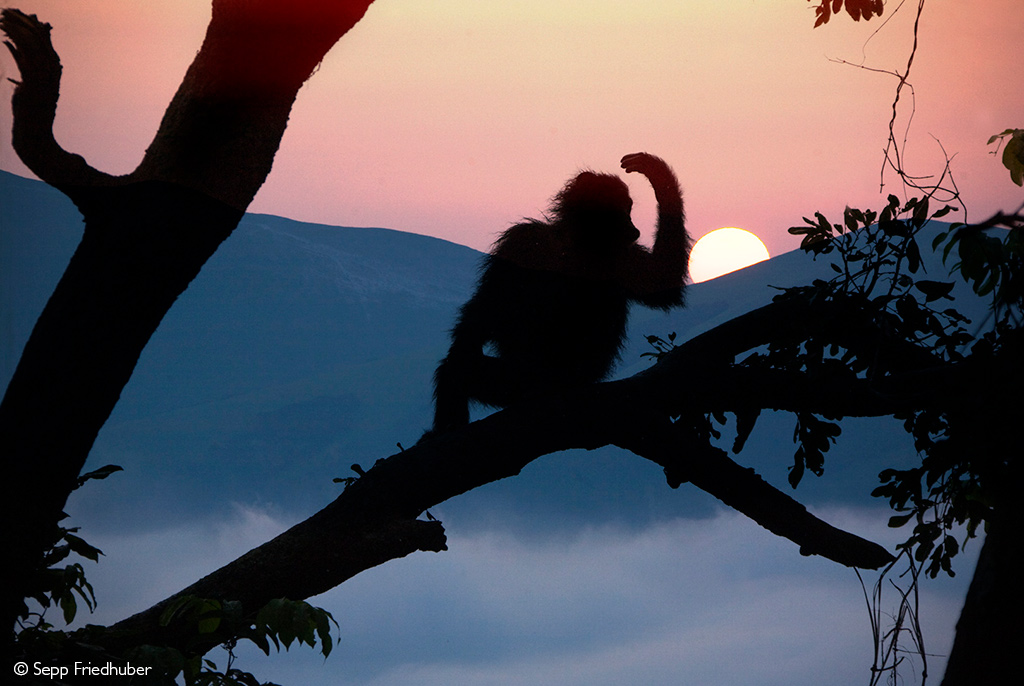
Mahale National Park
Also situated on the banks of Lake Tanganyika, Mahale National Park is substantially larger than Gombe, extending over the craggy Mahale Mountains and across rolling hills to the east. The forested western slopes are home to a substantial population of chimpanzees, with many families being the subjects of scientific study for over 50 years. And how better to celebrate a successful (and exhausting) day spent trekking for chimps than diving into the cool embrace of Lake Tanganyika’s crystal waters or lounging on its beaches, cocktail in hand?
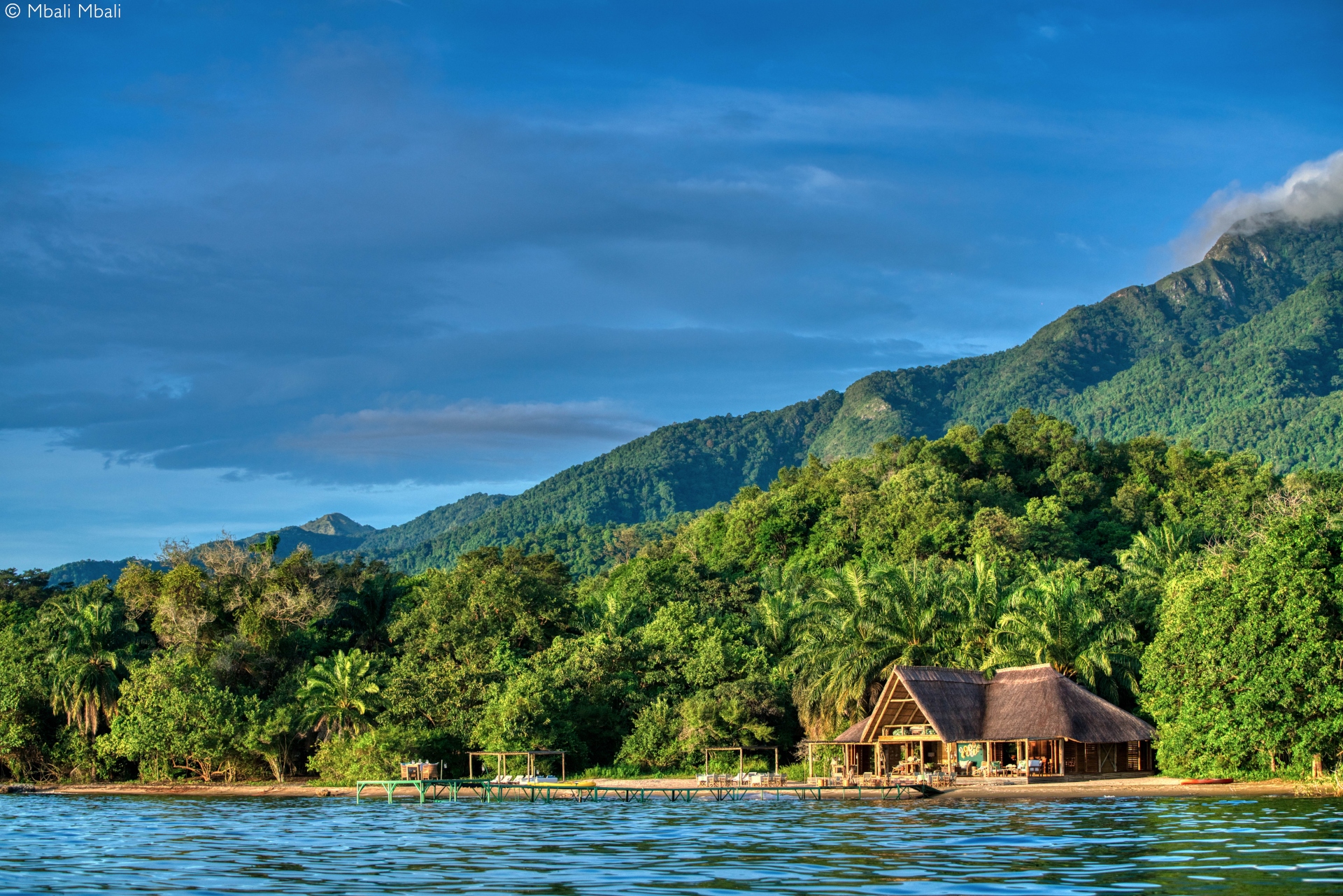
Katavi National Park
Katavi National Park is one of Tanzania’s most electrifying African safari destinations, ruled by the cadence of the rainy season. During the late dry season, the park swelters beneath a merciless sun and its residents are forced to compete for access to the remaining water in a dramatic battle for survival. Visitors who venture here off the beaten safari track are rewarded with a natural African nirvana that they can enjoy all to themselves.

Tanzania’s e astern/coastal circuit
With all the excitement of an African safari, complete with early mornings, dusty roads and adrenaline-inducing sightings, it is well worth taking a few days to collect one’s emotions before returning home from Tanzania. And where better to do that than on one of the country’s paradise tropical beaches? Though the mainland offers some beautiful spots to soak in the sun, the islands off-shore provide the best seaside escapes.
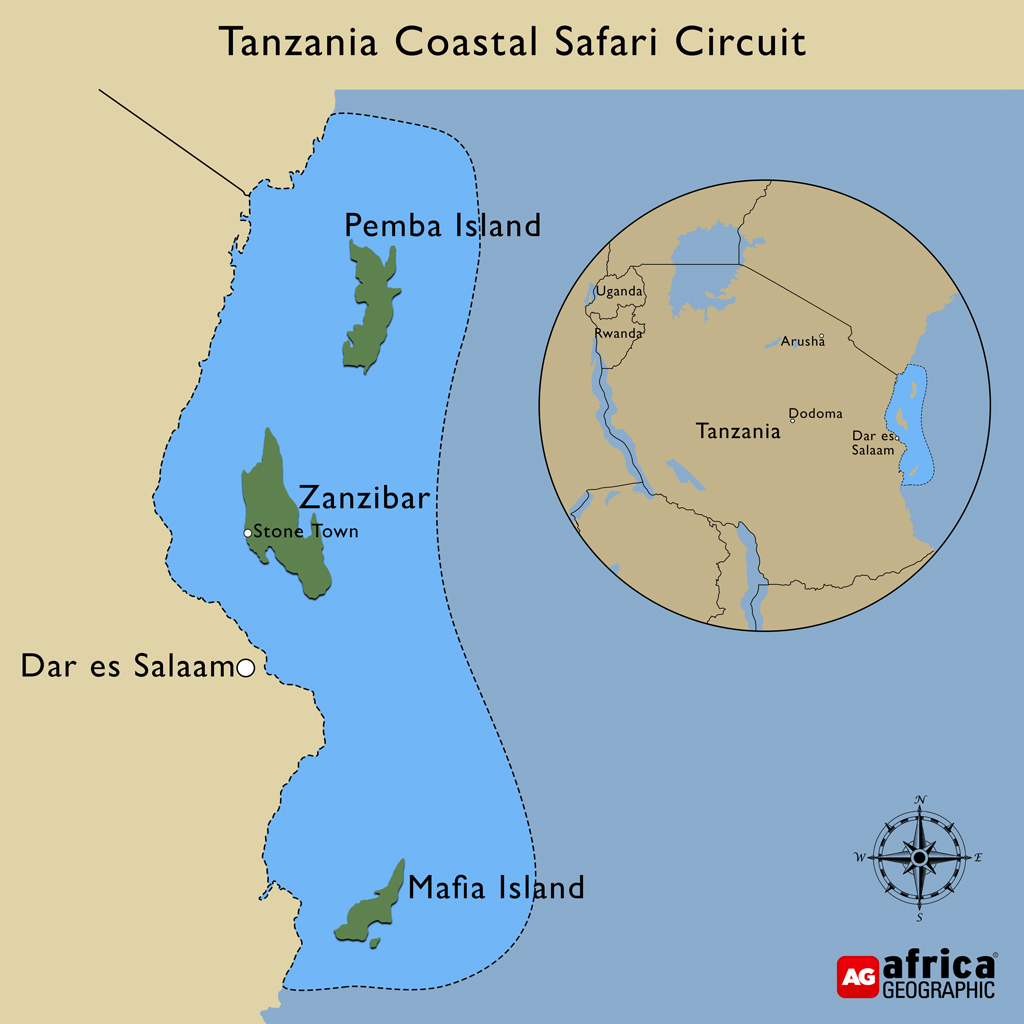
Zanzibar Island
Zanzibar is the largest and most popular of Tanzania’s islands, renowned as a honeymoon destination and beach paradise. From dazzling beaches to the vibrant cultural hub of Stone Town, Zanzibar is an accessible and relatively affordable island Utopia.

Mafia Island
Less crowded and more exclusive than Zanzibar, Mafia Island offers the perfect place to soak up the resplendent marine scenery, including snorkelling, diving with whale sharks, and even watching hundreds of turtle hatchlings make their perilous first journey to the sea.

Pemba Island
Like Mafia Island, Pemba Island is quieter than Zanzibar, removed from the trappings of mass tourism. Its fertile soils support rolling hills covered with fruit-laden coconut, banana and cassava trees. The warm waters surrounding it are famous for their exceptional diving and snorkelling opportunities.

Final thoughts
No matter the safari circuit, Tanzania is a country that consistently delivers excitement and copious natural wonders to its fortunate visitors.
HOW TO GET THE MOST OUT OF AFRICA GEOGRAPHIC:
- Travel with us . Travel in Africa is about knowing when and where to go, and with whom. A few weeks too early / late and a few kilometres off course and you could miss the greatest show on Earth. And wouldn’t that be a pity? Browse our ready-made packages or answer a few questions to start planning your dream safari .
- Subscribe to our FREE newsletter / download our FREE app to enjoy the following benefits.
- Plan your safaris in remote parks protected by African Parks via our sister company https://ukuri.travel/ - safari camps for responsible travellers

Friend's Email Address
Your Email Address
14 Days Tanzania Southern Circuit Safari
brief overview
his Tanzania tour starts in the coastal metropolis of Dar es Salaam and takes you to the little known national parks and protected areas of the Southern Circuit . During this trip you will visit little frequented parks and due to the vastness of the areas you will rarely see other travellers.
First you will drive from Dar es Salaam to the Udzungwa Mountains National Park . In this tropical mountain rainforest an armed ranger will accompany you to spectacular mountain landscapes and remote waterfalls. Afterwards you will visit the city of Iringa, founded by German colonialists. From there the safari continues to Ruaha National Park , named after the Great Ruaha River. This river allows a variety of animals and plants even in the dry months. Next on the program is the Mikumi National Park with the most big game species in Tanzania. Last but not least you will visit the Selous Game Reserve , a huge protected area with more than 50.000 km² – bigger than Switzerland.
The very best Safari and Mountain Guides
Unlimited game drives / safari in nationalparks, exclusive private safari holidays with great value, 10+ years safari expertise with head office in arusha, sustainable tourism with 100% tanzanian company.
Day 1: Arrival Dar es Salaam
Transfer from Julius Nyerere International Airport or harbour (e.g. Ferry from Zanzibar) to your accommodation.
Day 2: Dar es Salaam – Udzungwa Mountains National Park
Your first stop is Udzungwa Mountains National Park , which you reach after a 4 to 5 hour drive. The trail leads on a well tarred road past Morogoro and the Uluguru Mountains. The Morogoro region with its surrounding mountain ranges is one of the most fertile areas of Tanzania and supplies Dar es Salaam and other coastal regions with agricultural products. Soon after, the road signs remind you that you are crossing the Mikumi National Park . The Tanzania – Zambia Highway, which crosses the Mikumi National Park, is the main link between Dar es Salaam and the south of the country.
The Udzungwa National Park was declared a protected area in 1992 with the support of the World Wildlife Fund. It was opened by Prince Bernhard of the Netherlands as a co-founder of the WWF. This mountainous region covers an area of approximately 2,000 square kilometres, with mountain forests extending between 300 and 2,800 metres in altitude. The Udzungwas are an important watershed and the water resources there irrigate the fertile Kilombero Valley. As a result of the different altitudes there are four vegetation zones: flat forest, submontane mountain forest, low mountain forest and high mountain forest. After a varied drive you will reach your accommodation near the National Park Headquarters.
Day 3: Udzungwa Mountains National Park
After breakfast you will go with an armed ranger to the Sanje waterfalls; a hike of about 10 kilometers in total, which starts in the village of Sanje. The houses in Sanje have on average the size of a comfortable German bathroom (about 3 x 3 meters), are built of pressed soil bricks and covered with corrugated iron. The furnishings usually consist of a bed and a small table, there is no electricity to think of. Cooking is done with firewood outside the hut. The villagers are allowed to take fallen trees, fallen branches etc. from the area around the park twice a week.
Their hike leads on steep paths higher and higher into the mountainous landscape, which is densely forested, unlike most other regions in East Africa. If it was hot, you would start to sweat, but often it is cloudy and the trees provide pleasant shade. On fertile, sunlit clearings, where mushrooms, lichens, mosses and ferns colonise every moist bark of the jungle trees, where the wonderful smell of the forest takes up all senses, one really thinks of a fairy tale forest. After about two or three hours you reach the ponds at the foot of the Sanje waterfalls. The view of the falling water masses is simply fantastic. In total there are three water cascades, the biggest of which is the actual Sanje waterfall, which gushes out from a height of 200 metres. Bathing is a must here – don’t forget your bathing equipment. In the afternoon you make your way back. In Sanje your driver will be waiting for you to take you to your accommodation.
Day 4: Udzungwa Mountains National Park – Iringa Town
Today you will leave the Udzungwa Mountains and drive on to Iringa, the town closest to Ruaha National Park . Soon the road begins to rise and takes a winding route through quite mountainous terrain, the Rubeho Mountains. Here the settlement areas of the Hehe overlap with those of Luguru. Typical are the single farmsteads that appear from time to time, real villages do not exist here in this area. People and their cattle seem to come from nowhere. Soon the settlement decreases completely and there is only dense primeval and bush forest.
You now pass the place where the Great and the Small Ruaha River meet. The river becomes wider and flows more calmly. The settlement is increasing again, the locals are building the land, because the valley is well supplied with water. Before Iringa you will pass by the impressive Kitonga mountains. After Kitonga the road begins to rise serpentine up to the last step of the high plateau of Iringa. The picturesque town with its blue Jacaranda avenues has about 150,000 inhabitants and is situated at an altitude of 1,600 meters, so warm days and cool nights. Due to its location on the rocky plateau you have a beautiful view of the surroundings of the city, especially of the many tobacco and corn fields in the plain. Iringa was founded by German colonialists at the end of the 19th century. Because of its strategic location, they built a large fort in 1896 as a defensive post against the rebellious Hehe. There are still some buildings from the German colonial period to visit. The old German fort is located in the centre behind the police building. Before it was built, a memorial was erected for fallen Africans in the Maji-Maji uprising. In the surroundings there are some historical places that remind on the brutal rule of the German colonialists. After a detailed city tour you will drive to your accommodation.
Day 5: Iringa – Ruaha National Park
After breakfast the drive to Ruaha National Park can begin. The road is in an acceptable condition and so you can cover the 120 kilometres in about two hours. Once you arrive in the national park, you will stay in your accommodation for two days.
The Ruaha Park is not yet very crowded but it is one of the largest elephant sanctuaries in Tanzania. It takes its name from the Great Ruaha River, which meanders along its entire eastern boundary between colossal boulders and sandbanks and offers spectacular scenery with gorges of orange shining sandstone. The Ruaha River is the character river of Ruaha National Park, similar to the Selous of the Rufiji River. During the dry months the wildlife is concentrated along the river, so there is plenty to see and do near the river. Often the rivers dry up completely. On these so called sand rivers there are still many animals to be seen, because under the sand surface of the river there is often an impermeable rock layer, so that the water can be reached within a trench distance from the surface. The animals can therefore easily obtain the vital water. Accordingly, you can see elephants in the area of the Mwangusi and Mdonyo Sandriver as they dig water holes with their trunks and even with their clumsy feet to get to the cool water. – During the rainy season (from March to May), however, both the Ruaha National Park and the Selous Game Reserve have tributaries of the Ruaha and Rufiji Rivers, respectively, which swell into huge streams that flood the roads.
Day 6: Ruaha National Park
You will undertake various game drives and will not be bored for a second. You will always be aware of the peaceful atmosphere in this part of Africa – no other car, no masses of tourists, only the sounds of nature can be heard. Far away seems to be any civilization, the words hectic and time seem insignificant, almost unknown.
The afternoon a good time to observe the wildlife along the Ruaha River. It is the time when the game comes to water. Hippos lie lazily in the water in groups of 10 to 20 females with their young. The hippopotamus bull chases all other males out of the herd, even pubescent young bulls (7-8 years old). These then join bachelor herds or live alone. Elephants trot along the river banks, herds of buffalo have settled there; antelopes, zebras and giraffes – a constant coming and going. But there are also many Nile crocodiles and you can watch them at the riverbanks, where they sunbathe in peace and quiet. During the deerstalking journey one gets to know different habitats, which are very different: Miombo forest land and acacia groves, uneven hilly terrain, grass plains, breathtakingly beautiful granite rock formations and repeatedly dried up river beds. During the dry season the buffalo come twice a day to the remaining water holes in the riverbed. Of course lions have hidden in the bush and wait for the thirsty ones. At such a waterhole, the most likely way to observe the natural interaction between predator and prey with your own eyes is to hunt. Ruaha Park boasts the largest population of lions in East Africa. It is not uncommon to see three or four different groups in a single day. In the evening you will return to your accommodation for a “Sun Downer”.
Day 7: Ruaha National Park – Iringa Town
Before breakfast you go on early game drive, anticipating the sunrise. Lions find plenty of prey, especially near the river, and are especially good hunters at this time of the day. After the game drive is finished, breakfast is made up for.
After the car is loaded, leave Ruaha Park and drive towards Iringa. On the way there you will stop at the Isimilia site, which is just outside Iringa. It is one of the most important sites of its kind in Africa. An absolute must. During the Paleolithic Age, people lived here and left us a legacy of countless tools: hand axes, stone rakes, hammers, cleavers, spearheads, scrapers, etc. At the end of the 1950s, archaeologists from America discovered these Stone Age finds, which are between 60,000 and 100,000 years old. – During the excavation work, numerous fossilized antelope and pig bones were also found, which could be an indication of a former slaughterhouse. Among the most spectacular finds were the well-preserved skeleton pieces of a Gorgop, a forerunner of our hippopotamus, which these Stone Age people probably hunted as well. Through the narrow gorge of a side wadi we then return to Iringa and your accommodation.
Day 8: Iringa – Mikumi National Park
On the way towards Selous Game Reserve you will take a little more time to visit Mikumi National Park . From Iringa the road goes down into the valley over breathtaking serpentines. The conditions here are ideal for bamboo and of course there are enough grazing grounds. Accordingly, the area is populated. At the park entrance to the Mikumi the driver takes care of the entrance formalities and brings you to your accommodation. The Mikumi National Park is the most popular of all the southern parks, probably because it can be reached relatively quickly from Dar es Salaam. The protected area was declared a national park in 1964. However, it has only existed in its current extension since 1975. With more than 3,000 square kilometres, it is the third largest national park in Tanzania and thus larger than the country of Luxembourg. Any kind of hunting is prohibited, in contrast to the Selous, with which the Mikumi forms a common ecosystem, the largest in Africa. On three of its four sides, the Mikumi is surrounded by mountain ranges as a natural boundary. From south to west to north are the Rubeho Mountains, in the east the Uluguru Mountains. The name of the park is derived from the Swaheli: the Borassus palm tree that used to grow everywhere in the park is called Mikumi. Already Stanley, after his legendary encounter with Livingstone in Ujiji at Lake Tanganyika, crossed this area in 1872 on his way back to Dar es Salaam.
Your ‘deerstalking’ journey leads you first in north-western direction through the big savannah of the Mkata plains. The Mkata River flows from south to north through the reserve, but during the dry season it hides below the surface and makes its way underground. During the rainy season, however, it overflows its banks more often. This flood plain is preferred by the Yellow Baboons as their habitat. This species is lighter in colour and its physique is not quite as heavy as that of the Olive Baboons found in the North Parks. Baboons mainly eat grass, fruit and insects, but they also hunt and kill young impalas, reedbucks and other antelopes. After so much fresh air and adventure, you can look forward to dinner at your accommodation.
Day 9: Mikumi National Park – Morogoro Town
After breakfast at the camp, you will spend another half day exploring the Mikumi National Park. Open grasslands dominate the flood plain, which attracts game from the Miombo forest land. Interesting are the Mikumi elephants. They are much more compact than the other elephants in Tanzania, smaller and stockier. The reason for this fact has not yet been researched. Perhaps an unnatural selection has taken place due to the brisk ivory trade. The Mikumi is home to about 4000 to 6000 elephants.
After this beautiful game drive you leave Mikumi National Park via the Kikaboga entrance gate. For the night you stay in Morogoro. Morogoro is with 130.000 inhabitants a rather small town. In the middle of the town there is a market, which is always very busy.
Day 10: Morogoro – Selous Game Reserve
From Morogoro we continue south today, on a little used all-weather track (only partly asphalted) to the Selous Game Reserve . This is the most beautiful road on your whole tour, through the northern foothills of the forested Uluguru Mountains: a red road leading through a lush green landscape. This route has some steep sections. The vegetation and scenery along the route will delight you. Agriculture on one side (especially around the villages) and lonely wilderness on the other side alternate regularly. Shortly after Morogoro the road soon begins to rise gently. About 20 kilometres from Morogoro you cross a pass of the picturesque Uluguru Mountains and drive in serpentines into the valley of Msumbisi. Dense tree growth, sometimes hair-raising curves and sparse settlements line the road. Passing Mkuyuni, we continue over the Ruvu River to Mvuha, where your driver fills up the car. The village of Kisaki is the last village before the Selous Conservation Area. In Kisaki you soon meet the TAZARA railway line and then it is really only a few kilometres to Matambwe Gate of the Selous Game Reserve. After you have completed the entry formalities, your guide will take you to your desired accommodation.
With 55,000 square kilometres the Selous is the largest game reserve in Africa. Imagine the full size of the Netherlands with half the size of Belgium or four times the Serengeti. The Selous was first opened in 1905 by the German colonial government and reopened in 1951. In 1982 the game reserve was declared a World Heritage Site by UNESCO. It is named after the big game hunter and later naturalist Frederick Selous (pronounced: Seluu). Today, luxury safaris are marketed here at horrendous prices. We keep it more modest and accommodate you as usual on a campsite, which is located just behind the park border on the Rufiji River. – Typical for the Selous are its vast landscapes with the dry Miombo forests that surround the Rufiji River. Together with its many water arms and floodplains, this river creates a unique atmosphere. Not only hippos and crocodiles, but also water birds of various species can be observed up close again. The loop between the two lakes Nzelakela and Manze is especially beautiful, but also a detour to Beho Beho and to the tomb of Selous is worthwhile.
Day 11: Selous Game Reserve
Depending on your choice of accommodation, there are various activities available: Game drives, hikes with a park ranger, boat safari on the Rufiji River, night game drives etc.
Day 12: Selous Game Reserve
Day 13: Selous Game Reserve – Dar es Salaam
With the first rays of sunshine, breakfast is on the table and your luggage and equipment are stowed in the car, then you start the long drive (approx. 6 hours, 255 km) in a northerly direction through the coastal strip at sea level to Dar es Salaam. Here you might get a glimpse of life in Tanzania once again, see the children in their colourful school uniforms. Termite mounds line the road and you can watch the Maasai and their herds as you drive by. Small villages or seemingly completely uninhabited areas rush by. For lunch you will picnic on the way. For the last 25 kilometres the road runs along the south coast of Dar es Salaam, where dense vegetation and soils with fine white sand and palm trees betray the proximity to the Indian Ocean. In the late afternoon you will return to your hotel in Dar es Salaam where you started your epic adventure Safari.
Day 14: Safari End Dar es Salaam
After breakfast transfer to Julius Nyerere International Airport or harbour (Zanzibar ferry).
We will be happy to integrate your desired accommodation into the itinerary. It is also possible to change the route itself. Please talk to our safari advisors about your preferences.
Good to know
On this safari you will spend more time traveling between the destinations, as the distances are longer than Northern Circuit Safaris. Transportation from Dar es Salaam airport to your hotel and back, as well as two nights in Dar es Salaam and all fees are included in our offers, unless otherwise stated.
All our safaris are conducted in small private groups and each guest is guaranteed a window seat in the vehicle. As our contingent is limited, we recommend that you book early, especially during the Peak Season.
Your driver is a trained and licensed English speaking guide. You will travel in modified 4×4 vehicles (Toyota Landcruiser / Landrover Defender) and all our safari vehicles have roof hatches or elevating roofs which allow a better view of African wildlife, especially in high vegetation. You will also be able to charge your digital devices in the Safari car.
Tanzania Experts is proud to offer you the very best Safari Guides in Tanzania. Our founder Peter Sealand has guided safaris for clients around the world, as well as many international media organizations (including professional photographers and documentary filmmaker from National Geographic). Peter visited Europe and North America several times, he speaks English, German, Swahili and Maa.
Included in the travel price:
- All overnight stays as described
- All transfers and Safaris as described
- All National Parks, Ngorongoro Conservation Area and Protected Wildlife Area Fees
- All vehicle, ranger, guide and cooking fees
- Food and drinks
Not included in the travel price:
- Gratuity and tips
- Alcoholic beverages
- Personal expenses
- International flights
Prices 14 Days Tanzania Southern Circuit Safari
Prices for South Tanzania round trip only on request .
Due to many factors our safari prices can change:
- Number of travellers
- Travel period (e.g. surcharges in the peak season, discounts in the rain season)
- In case of families, age of children (e.g. do small children sleep in their parents’ hotel room?)
- Exchange rate fluctuations
- Short-term price changes of entrance fees and accommodation from institutions or the government
Our consultants will calculate the price for your tailor-made dream trip individually . Here at Tanzania Experts, our motivation is to offer as many people as possible the chance to travel to the incredibly beautiful and diverse paradise of Tanzania. Our prices are therefore very competitive .
Low Season: April, May and November High Season: 10 January – 31 January, February, March, June, September, October and 1 December to 19 December Peak Season: 1 January to 10 January, July, August and 20 December to 31 December
- Number of travellers per private safaris
- Travel period (e.g. surcharges in the peak season, discounts in the rainy season)
- In case of families, age of children (e.g. do small children sleep in their parents’ hotel room?)
- short-term price changes of entrance fees and accommodation from institutions or the government
Our consultants will calculate the price for your tailor-made dream trip individually . Here at Tanzania Experts, our motivation is to offer as many people as possible the chance to travel to the incredibly beautiful and diverse paradise Tanzania. Our prices are therefore very competitive .
Low Season: April, May and November High Season: 10 January – 31 January, February, March, June, September, October and 1 December to 19 December Peak Season: 1 January to 10 January, July, August and 20 December to 31 December
Travel costs and prices for Safaris in Tanzania
Unfortunately Tanzania is one of the most expensive tourist destinations in Africa. The high costs can be explained mainly by expensive national park and protected area fees, on which additional value added tax is now also charged. For example, just the one-time entrance to the Ngorongoro Caldera costs 295 USD per safari car, in addition to the normal entrance fee of 70 USD per person and day. On top of this there are also other national park fees and costs for an overnight stay within the park (also for luxury mobile camping safaris).
The low number of visitors in combination with the poor infrastructure, high tax burden, inefficient bureaucracy and the above mentioned national park fees lead to the relatively high Safari costs and prices in Tanzania.
Tanzania has very few tourists compared to other major African countries, in 2018 there were an optimistically estimated 1.5 million visitors (including Zanzibar only travellers) – as many visitors as the South-West African country Namibia with its total 2.5 million inhabitants. In contrast just the commercial hub and city of Dar es Salaam has three times as many inhabitants. In the same period, for example, Morocco had 12.3 million or Egypt about 8 million tourist visitors.
Due to the uniqueness of the country, with UNESCO protected world natural heritage sites such as the Kilimanjaro , the Serengeti with the world famous Great Animal Migration , the Ngorongoro Caldera , the gemstone Tanzanite – only found in a very small mining area near the Mererani Hills or the largest contiguous protected area in Africa ( Selous Game Reserve ), you will enjoy a truly once in a life time experience.
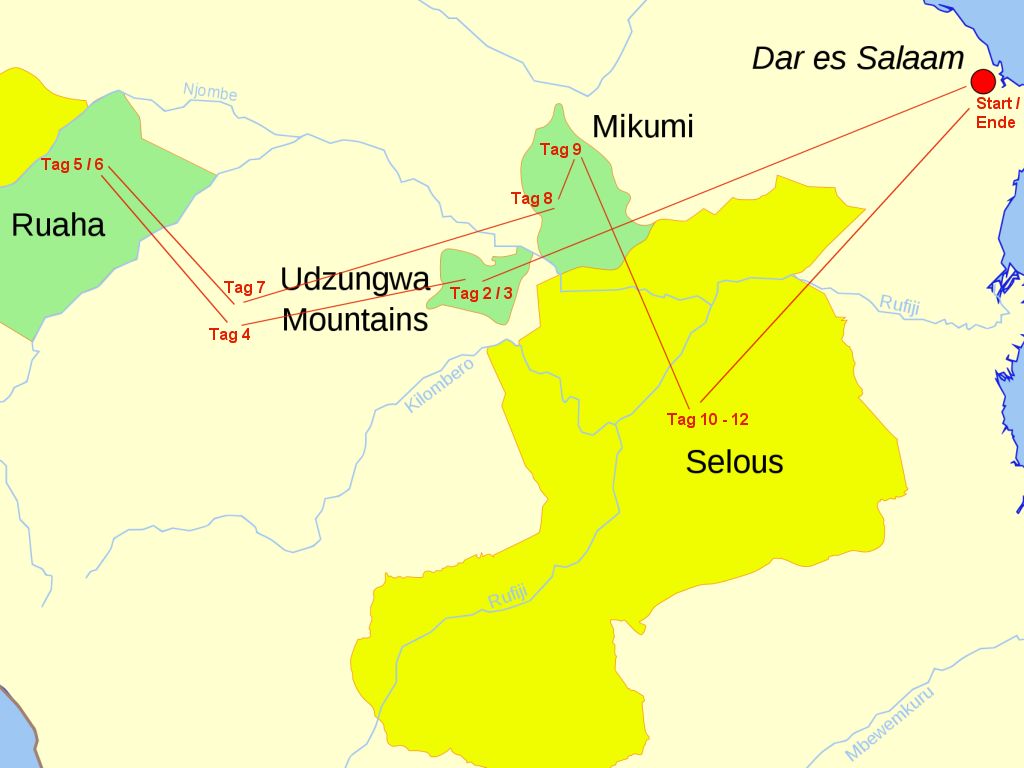
Please note: This map is only intended to give you a rough outline, the exact route will be determined by our experienced local safari guides.
You are welcome to combine this safari with the following options:
- Climbing of Kilimanjaro or Mount Meru Mountain
- Day trips (e.g. Marangu village cultural tour )
- Beach holiday on the Zanzibar Archipelago
- Northern Tanzania Safari (Northern Circuit)
Day 2: Dar – Udzungwa Mountains National Park
Day 3: Udzungwa Mountains NP
Day 4: Udzungwa Mountains NP – Iringa
Day 5: Iringa – Ruaha NP
Day 6: Ruaha NP
Day 7: Ruaha NP – Iringa
Day 8: Iringa – Mikumi NP
Day 9: Mikumi NP – Morogoro
Day 13: Selous Game Reserve – Dar es Salaam
Useful Links
Why tanzania experts.

PRESIDENT SAMIA: ELECTRIFY ALL HAMLETS
Align plans with govt, development partners urged, eu lifts ban on tanzania – grown bitter gourd fruit.

Launching of NBP Portal
Training session, training sessions for content, tnbp training : content management, southern circuit to be a buzzword in tanzania.

An ambitious marketing and tourism promotion strategy aimed at taking tourism to the next level in Southern Tanzania, is expected to be unveiled this morning in Njombe Region, it was learnt on Sunday.
Speaking in the margins of the East African Regional Tourism Expo here, an official with Tanzania Tourist Board (TTB) Colleta Nchimbi said the move was aimed at making Southern Tanzania a powerhouse in the tourism sector.
She said the two documents lined up to be launched include the Tanzania’s Southern Circuit Marketing and Promotion Strategy, which outline a number of steps and activities to be undertaken to publicise the tourism potential in Southern Tanzania.
The second strategy is called Tanzania Cultural Tourism Experiences Marketing Strategy, which is meant to expose the rich cultures of the country including the southern parts.
“The two documents stand to be a roadmap that outlines our strategies aimed at making tourism more meaningful to Tanzania,” she said.
Ms Nchimbi, who is the focal person of the Resilience Natural Resource Management of Tourism and growth (REGROW) at TTB, said the project is being financed by World Bank Group.
In addition to the strategies to be launched today, TTB through the REGROW Project is expected to build a Southern Circuit Marketing Destination Centre at Kihesa Kilolo in Iringa, which will have a conference hall, offices for the public and private sector and Tourism information Centre.
She said current participation of the TTB in East African Regional Tourism Expo in Bujumbura, Burundi was in line with the new Tourism Strategies.
The Minister for Natural Resources and Tourism, Ambassador Dr Pindi Chana (MP) is expected to be the Chief Guest in the launching ceremony.
During her three-day working visit in Njombe Region early in August this year, President Samia Suluhu Hassan expressed the government’s resolve to promote the Southern Circuit with an objective to increase tourists inflow in the country.
She announced the completion of plan to come up with the second phase of the Royal Tour documentary, which aims to showcase the country’s hidden tourist attractions.
The producers, according to the Head of State, have already devised a strategy and come up with the title of the film – ‘The Hidden Tanzania.’
“When I launched the Royal Tour in Arusha, I mentioned that there will be second and third episodes of the documentary. The second episode of the documentary will show the world additional hidden spots in Tanzania,” she said.
President Samia also stated that the Southern Circuit will be extensively included in the second plan.
She asserts that the film will highlight attractions like Kitulo National Park, which is known for the diverse range of attractive flowers and several species of birds that flocks the park each year.
During the public meeting minister Chana told the president that the Southern circuit has also attracted a number of tourists. She said statistics indicated that the number of visitors in Ruaha National Park has increased from 9000 to 13,000 since the launching of Royal Tour film, while in Kitulo National Park the number recorded is not less than 1,200.
She noted that the documentary has also helped to expand market for food commodities.
The minister however said that, her office is implementing the President directives of adding value to forest products. “Currently there are about 4,200 factories for forest products countrywide…we have also beekeeping business in which Njombe alone produces 85, tonnes of honey per year.
She called upon the region residents to continue planting trees noting that 50 per cent of the region population has focused on agriculture and planting trees. She said forest products contribute 40 per cent in the region revenue.
According to the Third Five-Year Development Plan (FYDP III of 2020/2021 to 2025/2026), Tanzania targets to achieve notching an income of 6 billion US dollars (about 14tri/-) from 5,000,000 tourists come 2025.


IMAGES
COMMENTS
The star attractions are the 1,700 chimpanzees that reside within the 1,613 square kilometre protected area, but the holy grail for most visitors is the 60-strong Mimikere or 'M' group, which has been studied by researchers for more than four decades. ... While most visits to Tanzania's southern safari circuit are trouble-free, travel ...
Ruaha National Park. The Ruaha River as seen on a walking safari in the dry season. Spanning over 20,000 square kilometres, Ruaha is Tanzania's second-largest national park. This vast tract of bush, about the size of New Jersey, is home to ten percent of Africa's lions and East Africa's highest population of elephants.
Where to go in southern Tanzania. While Tanzania's world-famous sites are in the northern circuit, the southern circuit of the country has more than its fair share of incredible sights to see. One word that can be used to describe the southern circuit is 'sprawling'. Ruaha and Nyerere national parks combine to over 50,000 km2 of safari ...
Wildlife in Mikumi National Park. Mikumi is remarkably the 3rd largest park in Tanzania, enclosed to the south and east with a semicircle of the Vuma Hills and Uluguru Mountains, rising to 2,743m. These look down across the wide, flat expanse of the Mkata flood plains, which provide a good spotting ground for a variety of larger animals.
The Southern Circuit attracts a tiny fraction -- recent statistics suggest as few as 1% -- of tourists who visit Tanzania. So much the better for those adventurous souls who forsake the well-trodden attractions of the northern safari circuit and instead head south.
Read More On The South Safari Parks Circuit For Tanzania Mikumi is Tanzania's fourth largest National Park, adjoining with Nyerere Park - Selous Reserve in the south forming one enormous ecosystem abutting the Udzungwa and Uluguru Mountains, the both latter highlands considered one of the world's biodiversity hotspots, the "Galapagos of Africa", because each separate hilltop has flora ...
The Southern Tanzania Safari Circuit offers a more secluded and authentic safari experience compared to the well-traveled northern circuit. Here are some compelling reasons to explore this region: 1.
Tourism in Southern Circuit of Tanzania is comprised of Morogoro, Iringa, Njombe, Ruvuma, Mbeya, Songwe, Rukwa and Katavi regions. The region has a vast endowment of tourism assets which includes National parks, reserves, cultural and historical attractions. In Southern Circuit Tourist can carry out active travel, practices culture and heritage ...
Tanzania's Southern Circuit. Years ago, Unique Safaris would travel with our own vehicles and guides to some of the southern National Parks such as Ruaha, Mikumi and Nyerere (formerly known as Selous Game Reserve). However, the price of fuel has made this impractical but we are able to book your flights and accommodations to any southern ...
WHAT TO SEE IN SOUTHERN CIRCUIT. In Southern Circuit of Tanzania, tourist can enjoy seeing several beatifuly topographical features such as mountains, hills and plateaus covered with thick forest, grasses, flowers and different wildlife species such as elephants, lions, leopards, girraffe, buffallos, hipopotamus, zebras and many others . Also, tourist can observe nice looking lakes such as ...
About Udzungwa Mountains National Park Size: 1,990 sq km (770 sq miles). Location: Five hours (350 km/215 miles) from Dar es Salaam; 65 kms (40 miles) southwest of Mikumi. From a two-hour hike to the waterfall to camping safaris. Combine with nearby Mikumi or en route to Ruaha.
The Southern Parks in Tanzania is the perfect holiday destination for travelers looking for plentiful and rare wildlife in a remote area of Tanziania, Africa. ... TANZANIA SOUTHERN CIRCUIT SAFARIS. PARKS INFORMATION ... and a paradise for hikers, although tourism infrastructure is almost non-existent. The park reaches its prime during the rainy ...
Tourism in Southern Circuit of Tanzania is comprised of Morogoro, Iringa, Njombe, Ruvuma, Mbeya, Songwe, Rukwa and Katavi regions. The region has a vast endowment of tourism assets which includes National parks, reserves, cultural and historical attractions. In Southern Circuit Tourist can carry out wildlife view, photographic, walking safaris ...
Browse 53 tours from the best tour operators in Southern Circuit Tanzania with 47 reviews visiting places like Dar es Salaam and Mikumi National Park. Compare & book now! Deals of the Week European Long Weekends Up to 50% OFF. Deals end: 2d 23h 36m 16s. 0. Destinations. ...
Depending on your itinerary, the main entry hubs into the western safari circuit are Tanzania's major international hubs: Kilimanjaro International Airport (JRO) in Arusha or Julius Nyerere International Airport (DAR) in Dar es Salaam. Most attractions are only accessible by either charter planes or a boat ride from Kigoma town.
Ruaha National Park, located in the middle of Tanzania about 130 km from Iringa, is the second largest park in Tanzania, covering an area of more than 13,000 km 2. The main vegetation types in Ruaha are Miombo woodland, acacia grasslands, and large baobab trees, all which attract diverse number of animals species.
Tanzania is a diverse country, so each circuit offers its own unique magic, divergent scenery, and appealing wildlife encounters. The northern, southern, western, and eastern circuits encompass a selection of national parks, reserves, conservation areas and even, in the case of the eastern circuit, islands and beaches, that visitors can choose ...
Whether you opt for the popular destinations on the northern circuit or the hidden gems of the southern route, Tanzania was made for safari. Int Toll Free Numbers 1-866-438-8677 1-888-360-2392
14 Days Tanzania Southern Circuit Safari. ... Unfortunately Tanzania is one of the most expensive tourist destinations in Africa. The high costs can be explained mainly by expensive national park and protected area fees, on which additional value added tax is now also charged. For example, just the one-time entrance to the Ngorongoro Caldera ...
An ambitious marketing and tourism promotion strategy aimed at taking tourism to the next level in Southern Tanzania, is expected to be unveiled this morning in Njombe Region, it was learnt on Sunday. Speaking in the margins of the East African Regional Tourism Expo here, an official with Tanzania Tourist Board (TTB) Colleta Nchimbi said the move was aimed at making Southern Tanzania a ...
The Southern Circuit is the lifeline of the country. It is largely a water source and catchment area in Tanzania, hence significant for supporting the REGROW project, which among other things, seeks to strengthen the management of protected areas and promote nature-based tourism in Southern Tanzania.
1,746. Southern circuit to be a buzzword in Tanzania. AN ambitious marketing and tourism promotion strategy aimed at taking tourism to the next level in Southern Tanzania, is expected to be unveiled this morning in Njombe Region, it was learnt on Sunday. Speaking in the margins of the East African Regional Tourism Expo here, an official with ...
2 likes, 0 comments - misstourismtanzaniaofficialApril 20, 2023 on : "The top five finalists of Miss Tourism Tanga 2023, will represent the Tanga region in the Miss ...